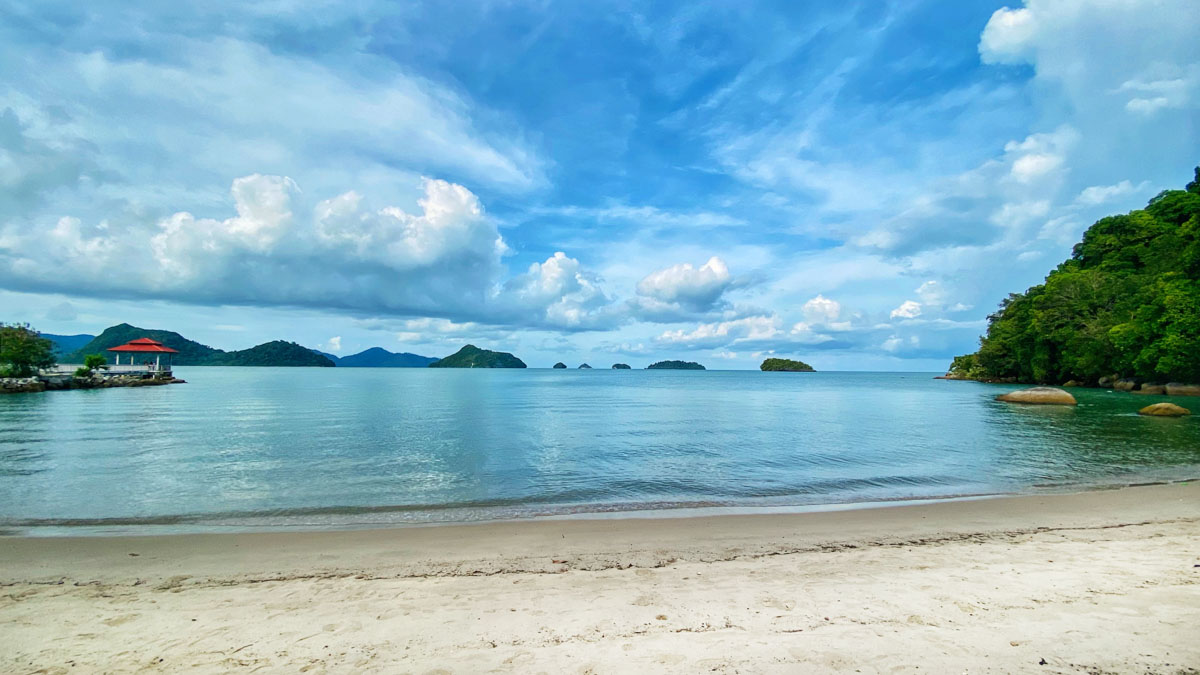
“How did you discover this place?” a surprised local asked as my family and I roamed around Tuba Island on scooters. Known as Pulau Tuba by the locals, where ‘Pulau’ means ‘island’ in Bahasa, this hidden gem of Langkawi is a beloved weekend getaway for locals but remains a well-kept secret from international tourists.
Many people don’t know that the picturesque Pulau Tuba is one of the four inhabited islands among the 99 islands of the Langkawi Archipelago in Malaysia. The others include Pulau Dayang Bunting, Pulau Rebak, and Pulau Langkawi itself. Surrounded by the Strait of Malacca, Pulau Tuba is only partially modernized, with locals living modest lives and practicing traditional farming. Most facilities on the island are basic, and electricity only reached the island in 1995. However, development has increased in recent years, with 500 homes built since 1990.
Island Demographics
There are 5,000 people living on the island, 99% of whom are Muslim Malay. The Tuba island is divided into six villages, each of which has its own chief. The community is tightly knit, with 70% of the population working as fishermen and the rest primarily as farmers. Despite having modern amenities like power, fresh water, and telephones, many villagers still draw water from wells. The hilly landscape of Pulau Tuba remains largely undeveloped, providing a natural habitat for wildlife and an abundance of herbs and shrubs. Hornbills are a common sight, soaring through the skies, while the island is also home to numerous water buffalo.
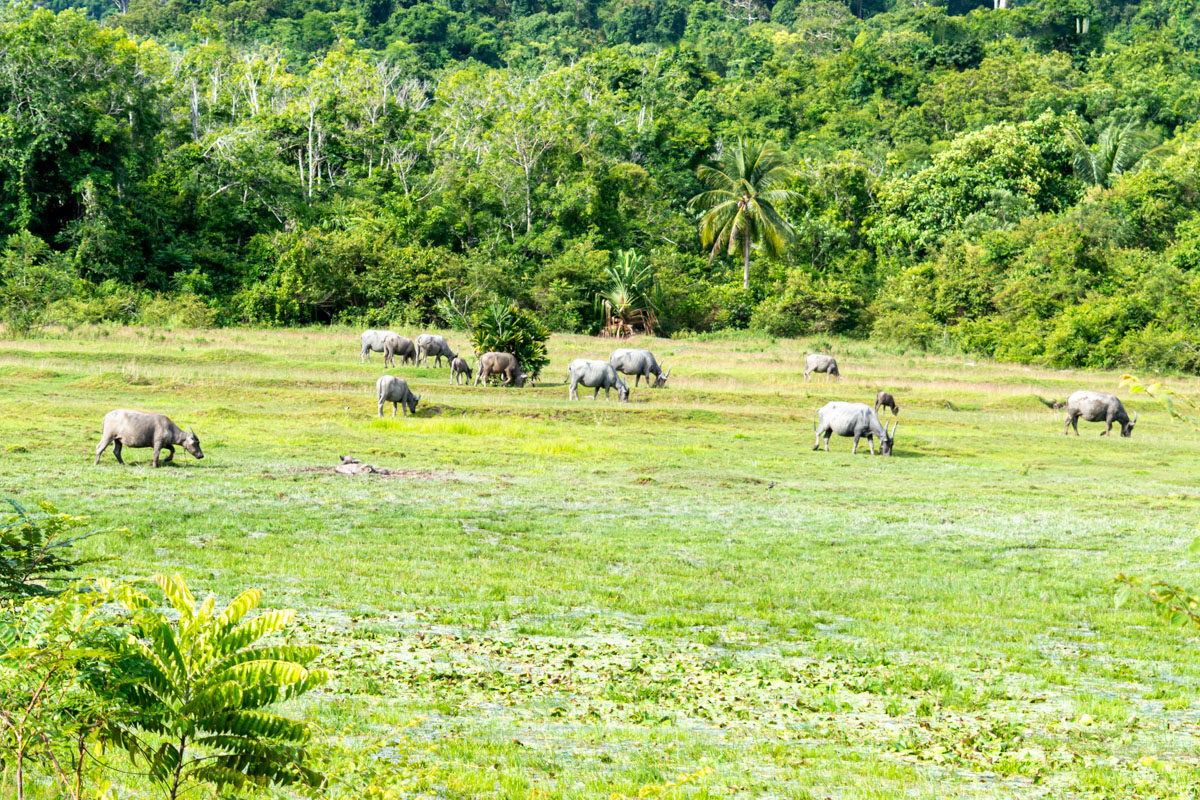
Fishermen sometimes venture into the forest to gather herbs, medicinal roots, wild fruits, wax, and honey, which they sell to supplement their income. Entire households often engage in both fishing and farming, with women contributing by weaving pandan and coconut leaf mats and crafting other handicrafts to support the family.
History of Pulau Tuba
The island of Pulau Tuba derives its name from the indigenous tuba tree, whose roots were historically used by local fishermen to poison and catch fish in large quantities. This practice, a testament to the island’s unique natural resources, has faded into history as tuba trees were gradually replaced by rubber plantations. Today, only one tuba tree remains on the island.
Pulau Tuba is part of the Dayang Bunting Marble Geoforest Park, a UNESCO-designated geopark, notable for its ancient granite and marble rock formations that date back over 290 million years. This park is one of three such geoparks in Langkawi, the others being Kilim Karst Geoforest Park and Machinchang Geoforest Park, the latter known for housing the famous Langkawi SkyCab.
During World War II, Pulau Tuba witnessed the grim realities of conflict when Japanese forces invaded Kedah in December 1941. Many locals sought refuge in Gua Kelawar, known as the Bat Caves, hiding for over a month to escape the invading forces. Some of the island’s elderly residents still recall those harrowing days, preserving a poignant chapter of Pulau Tuba’s history.
Activities and Experiences in Langkawi
What makes Pulau Tuba a popular weekend getaway for locals?
When we arrived at Kuah jetty to board the boat for Pulau Tuba, we noticed a surprising absence of foreign tourists. The same was true when we reached the island and explored various jetties. Despite the abundance of rental scooters at each jetty, there were no tourists in sight, which made me wonder why scooter rentals were such a big business on the island.
Pulau Tuba boasts many picture-perfect views, including white sand beaches and a pristine mangrove forest. The island is home to the most spectacular beaches in Langkawi. While these natural attractions are stunning, they are not unique in Malaysia and tend to draw more international tourists than locals. Additionally, the predominantly Muslim population means there are no shops selling alcohol, which rules out that as a reason for the island’s popularity.
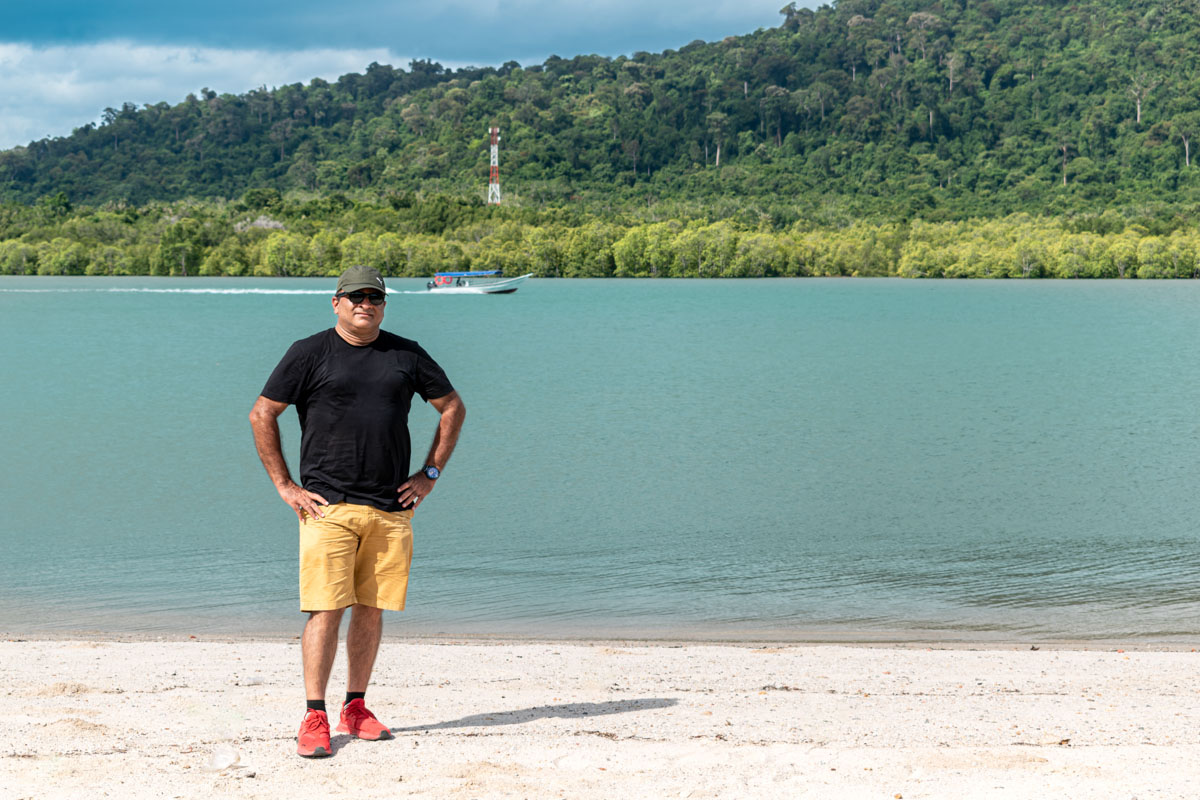
So, what makes Pulau Tuba a hotspot for local tourists?
Any guesses?
The answer is simple: the food.
Pulau Tuba is renowned for its Mee Udang, or prawn noodles. This culinary delight is the primary attraction for local visitors. As the saying goes, “food has no boundaries,” and people are willing to travel any distance to satisfy their appetite. I will discuss more about the food in the later section of this blog.
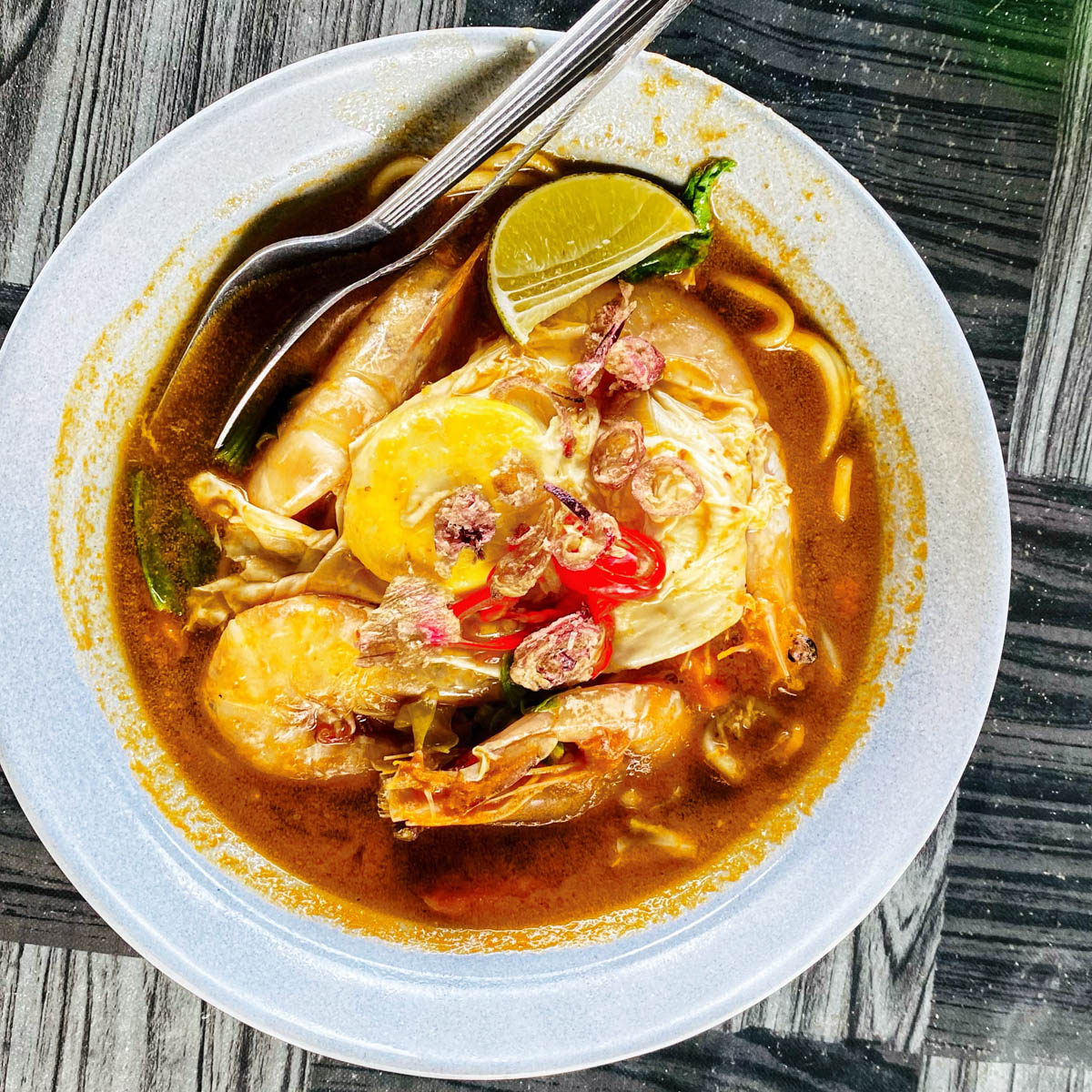
The island is dotted with numerous jetties, allowing locals to choose the one closest to their home for easy access. They board a boat to Pulau Tuba, rent a scooter upon arrival, and head straight to their favorite restaurants for a hearty bowl of Mee Udang. That’s fascinating, isn’t it? The locals I spoke with mentioned that, besides fishing and agriculture, the island’s economy flourishes thanks to local tourists who come specifically to enjoy Tuban cuisine.
Things to do in Pulau Tuba
Pulau Tuba is a hidden gem of Langkawi, often overlooked by mainstream tourists. If you love nature and want to explore a unique culture without the rush of typical tourist spots, this is the place for you. Pulau Tuba is not for everyone; it’s for those who appreciate a simple, laid-back island, lush greenery and surrounded by picture-postcard coastlines and white sand beaches, without the luxury. A trip to Pulau Tuba is a perfect getaway for families visiting Langkawi.
This island is a blend of traditional kampung life and modern conveniences. There are plenty of relaxed activities to enjoy, or you can simply stay in a scenic spot and do nothing. Pulau Tuba is perfect for the slow and intrepid traveler who enjoys immersing themselves in a place without much fanfare.
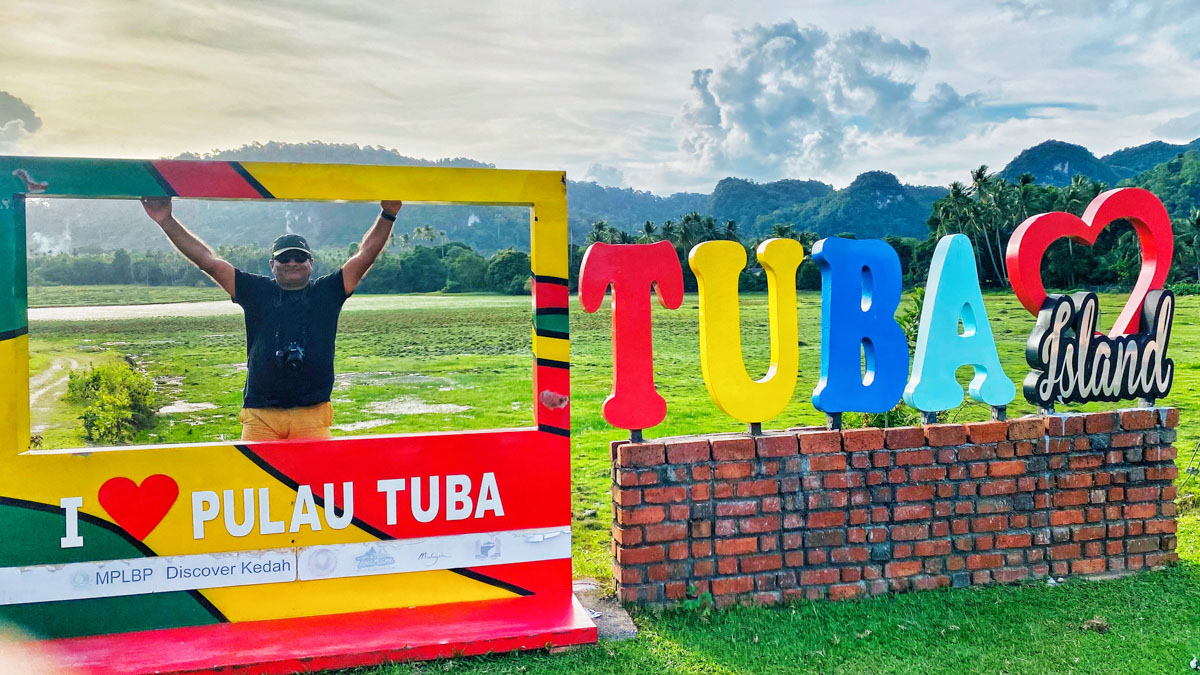
Rent a scooter and explore Pulau Tuba
This is exactly why my family decided to visit Pulau Tuba. Little did we know that it would become an experience we would cherish for a very long time. It’s important to note that the island has very few four-wheelers or taxis, making it difficult to hire them unless you’ve made prior arrangements. Additionally, you cannot reach Dayang Bunting Island (more on this later) by car.
Navigating Pulau Tuba’s enchanting landscape is best on a scooter, where the sea breeze dances through your hair as you traverse winding, forest-fringed roads. Vibrant houses in hues of pink, yellow, orange and blue punctuate the scenery, complementing breathtaking views of the sea. Engage warmly with locals along the way, who greet you with smiles. Scooters are also the best way to explore the various nooks and crannies of this picturesque island, taking you to places where cars cannot go. The island offers some of the best scenic drives in Langkawi.
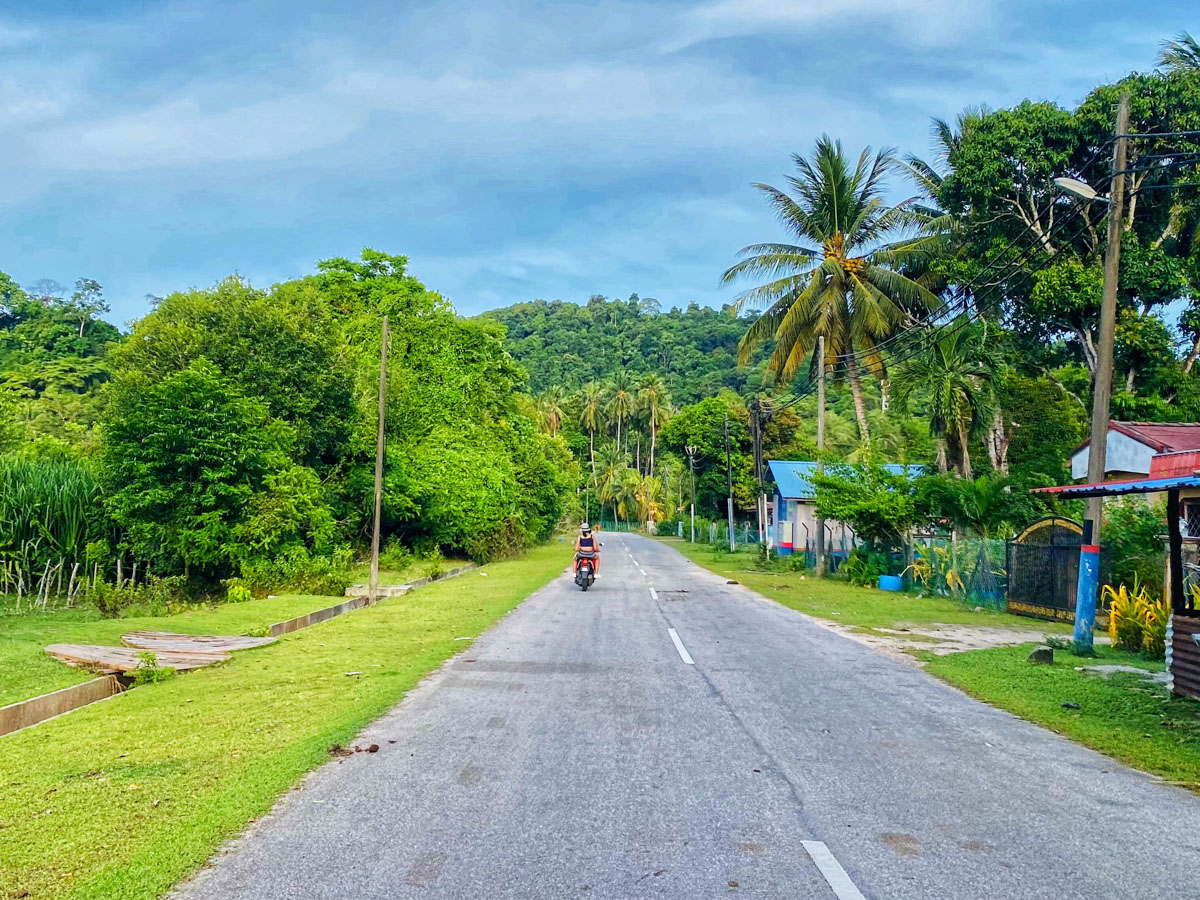
The first thing you should do is take a picture of the island map displayed in a large glass frame at the main Pulau Tuba jetty. This will give you a good overview of the island’s topography. Direct use of Google Maps may not be very helpful unless you’ve done prior research on the places you want to visit. Honestly, we never opened Google Maps on our phones during our stay on the island.
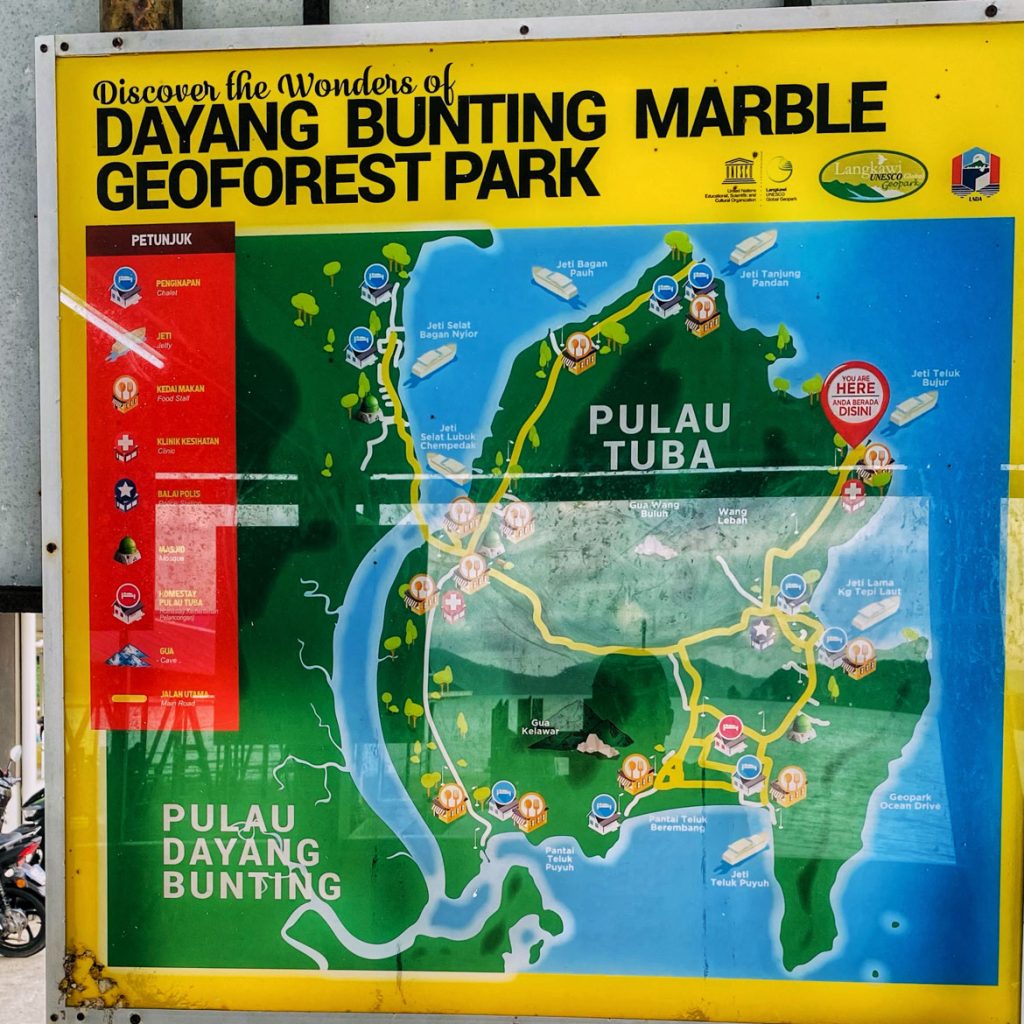
Remember, this island is a forest teeming with wildlife at every corner. Please be very careful while driving and avoid speeding unnecessarily to prevent harming the wildlife. In front of me, I saw a monitor lizard tragically run over by a scooter. She was taking her last breath by the time we reached her, and she died an unnatural death.
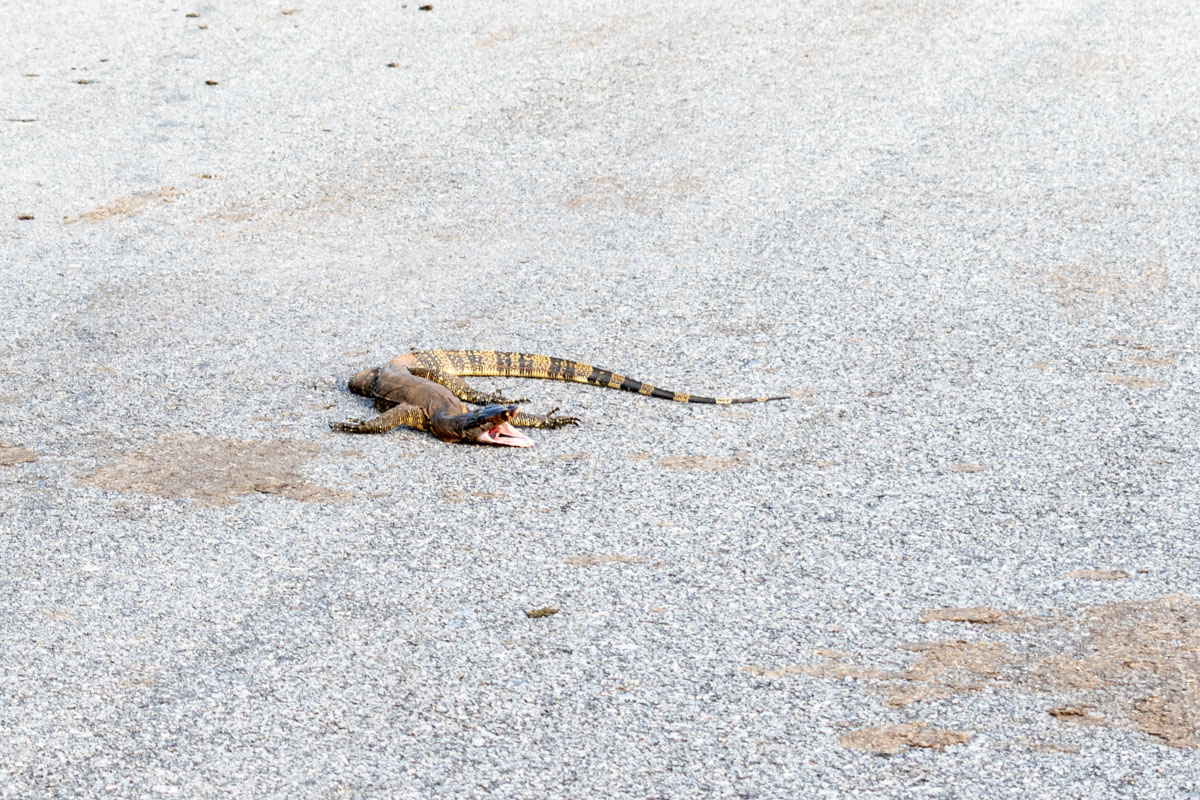
Visit Dayang Bunting Island
Visitors often confuse the neighboring islands of Dayang Bunting and Tuba, mistakenly treating them as one entity. In reality, they are distinct islands with separate local administrations, connected by a narrow bridge spanning the Selat Tuba (Selat meaning strait).
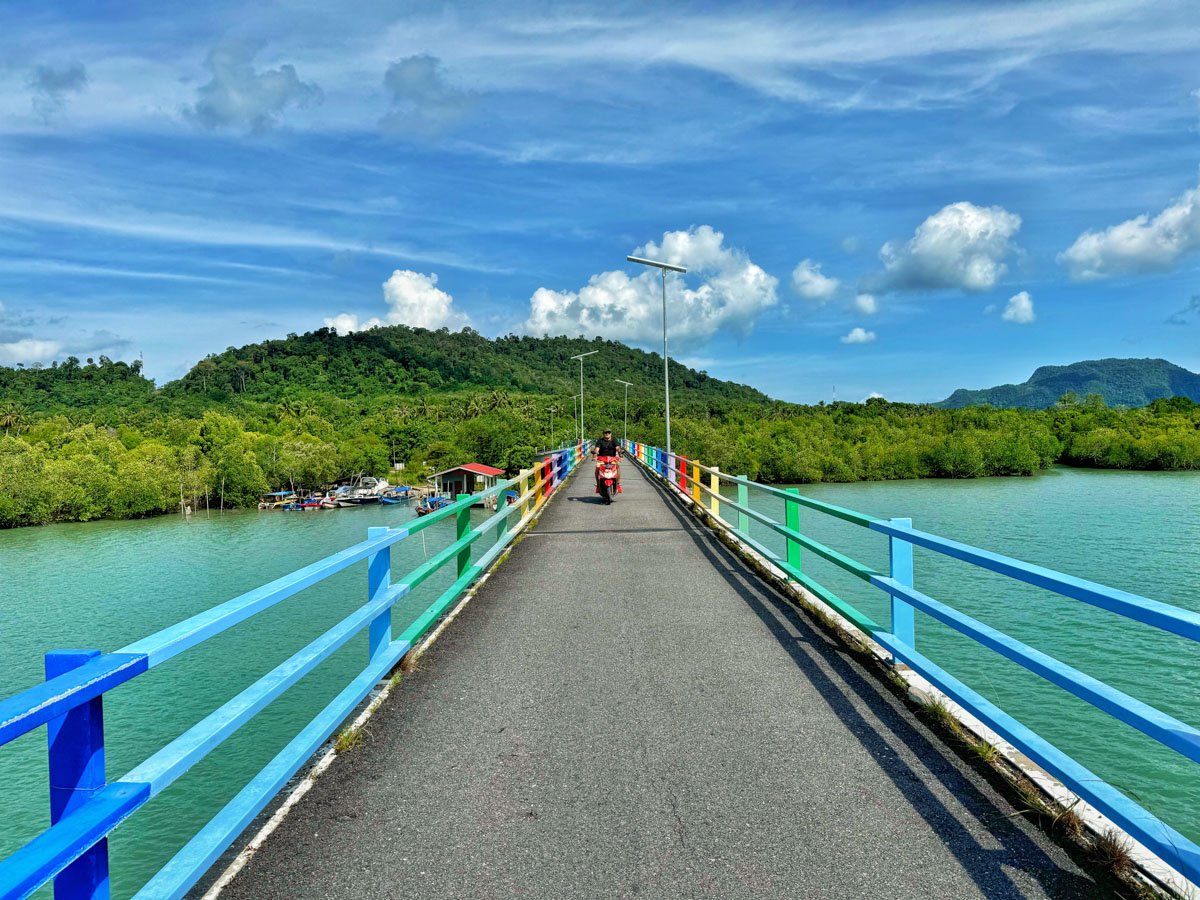
Driving across this bridge offers a breathtaking experience, with the ocean stretching out on either side and the picturesque Selat Lubuk Chempedak jetty floating gracefully amidst azure waters. Blessed with perfect weather and clear blue skies, we captured stunning photographs on the bridge, spending leisurely moments enjoying the idyllic landscape. Despite the approaching 30-degree Celsius temperature, the cool breeze kept us comfortable throughout our visit. This narrow bridge, too slender for cars, is a serene pathway between these enchanting islands.
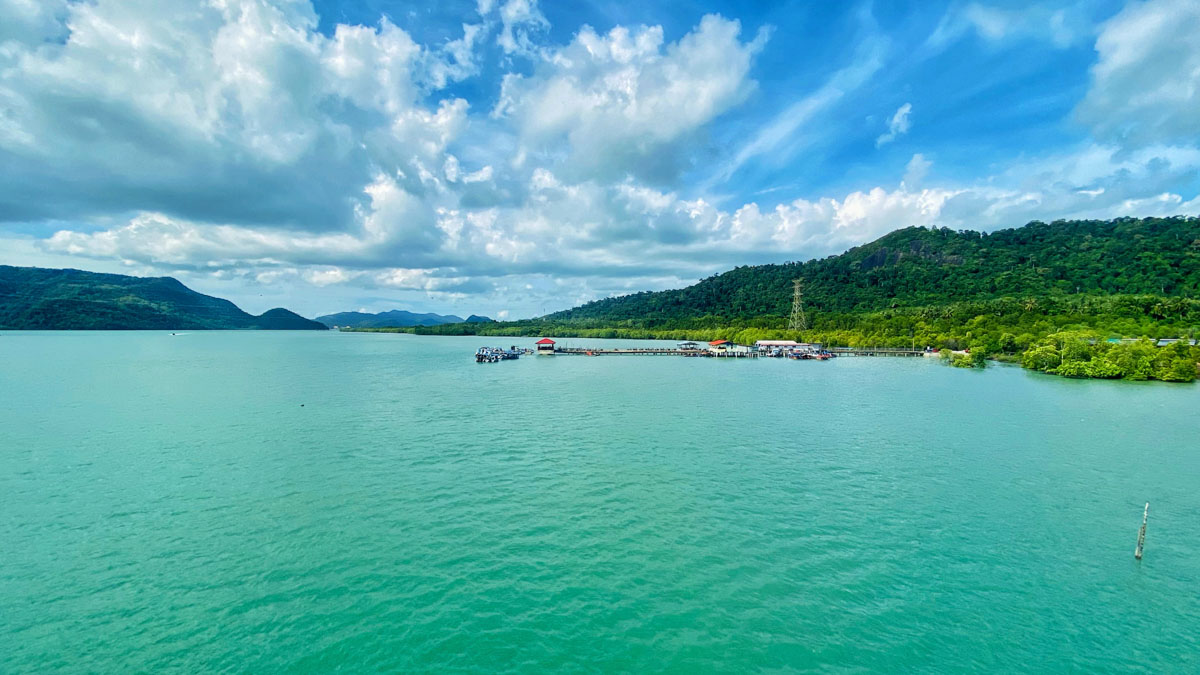
As we approached the end of the bridge, a floating chalet caught our eye on the left, nestled amidst mangroves and overlooking the ocean. After parking the scooter and descending to the narrow platform beneath the bridge, we explored the cozy rooms of the chalet. It seemed like an ideal spot for a tranquil night away from it all – perhaps a plan for another visit.
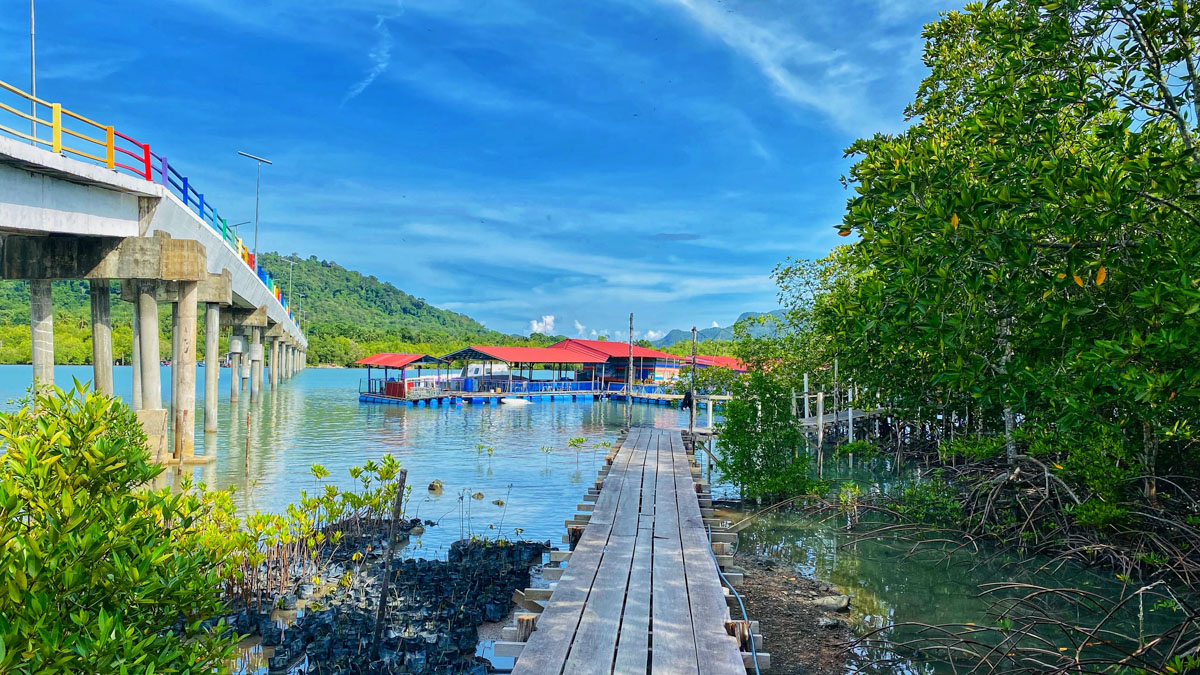
Continuing towards the residential and market area of Dayang Bunting Island, a stunning white sand beach appeared to our right. Its serene waters beckoned us, regretting that we hadn’t packed swimwear. Unable to resist completely, we dipped our toes and soaked in the beach’s tranquil ambiance, capturing more memorable photos undisturbed by any other visitors.
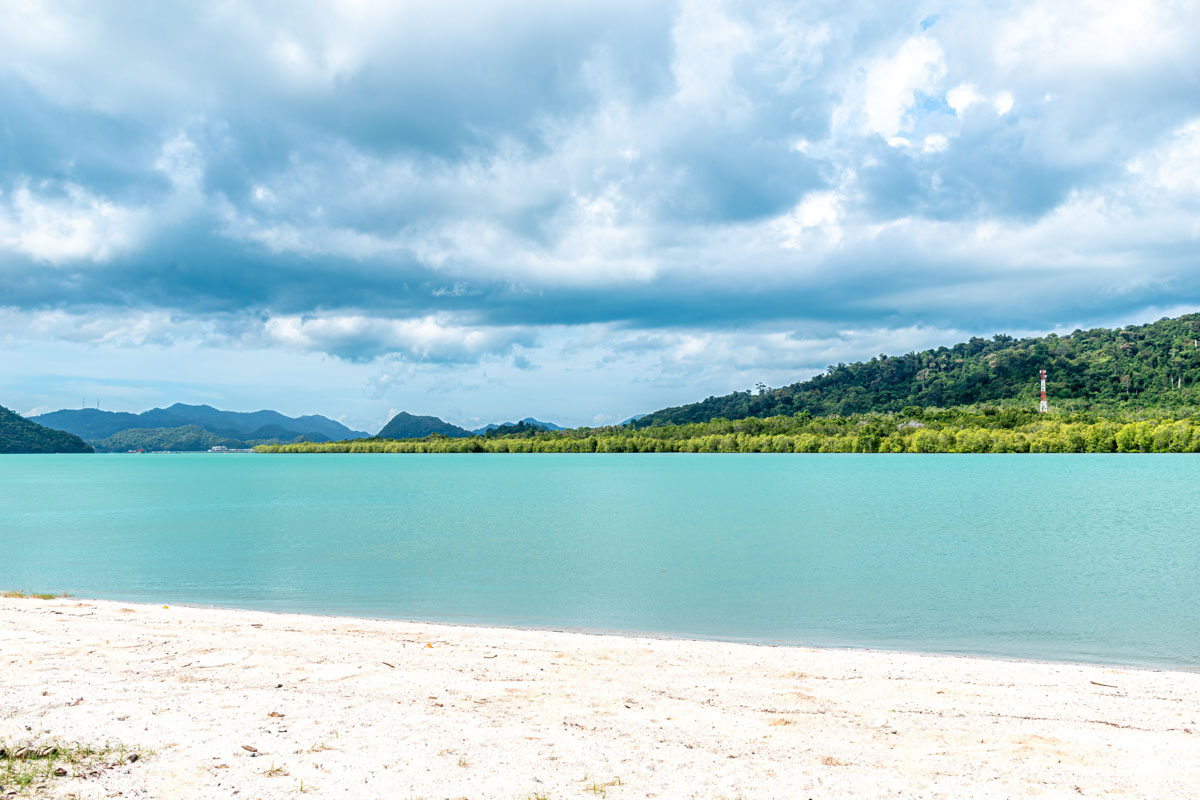
The same road leads to the market and settlement area, marking its end. Along the way, we discovered a narrow road stretching over the ocean towards Selat Bagan Nyior jetty. A short 200-meter drive brought us to the small platform bustling with scooters for rent. The view from the jetty was truly captivating, offering glimpses of boats ferrying passengers to Kuah and beyond. Renting a scooter proved invaluable, allowing us to explore such hidden gems inaccessible by car.
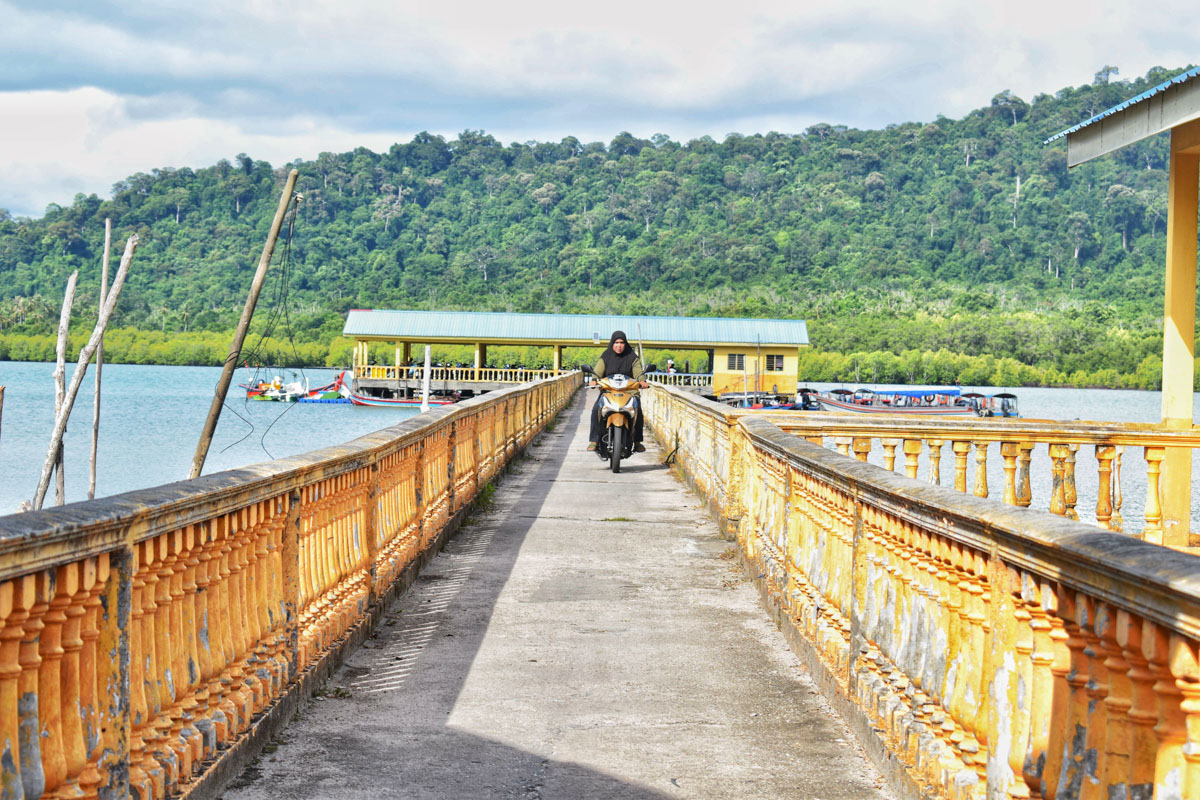
Just before crossing the bridge from the Tuba side, you’ll find a fuel station along with a few nearby restaurants. While the scooter you rent typically comes with sufficient petrol, this station serves as a convenient option for refueling if needed. It’s likely the sole fueling facility in this area of the island.
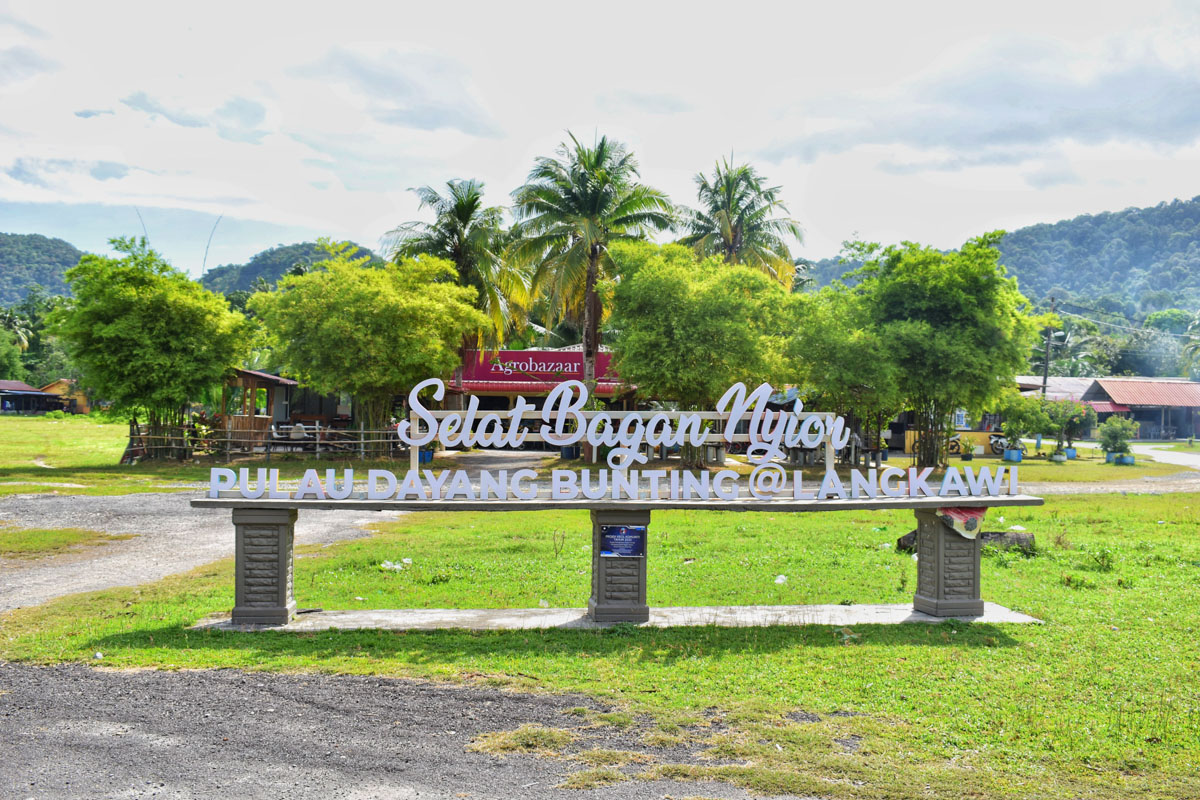
Taste the local food
A visit to Pulau Tuba isn’t complete without indulging in its famous local Malay cuisine. By late afternoon, we found ourselves hungry, contemplating lunch near the fuel station on our return to Tuba. However, we met a local gentleman at Selat Bagan Nyior jetty who grew up on the island and now works in Langkawi. He recommended a different experience: heading straight to the northern tip of the island for its breathtaking scenery and enjoying a meal by the ocean to fully immerse in Tuba’s ambience. He also suggested a slight detour to see some of the island’s charming schools where he studied in his younger days, which we happily explored.
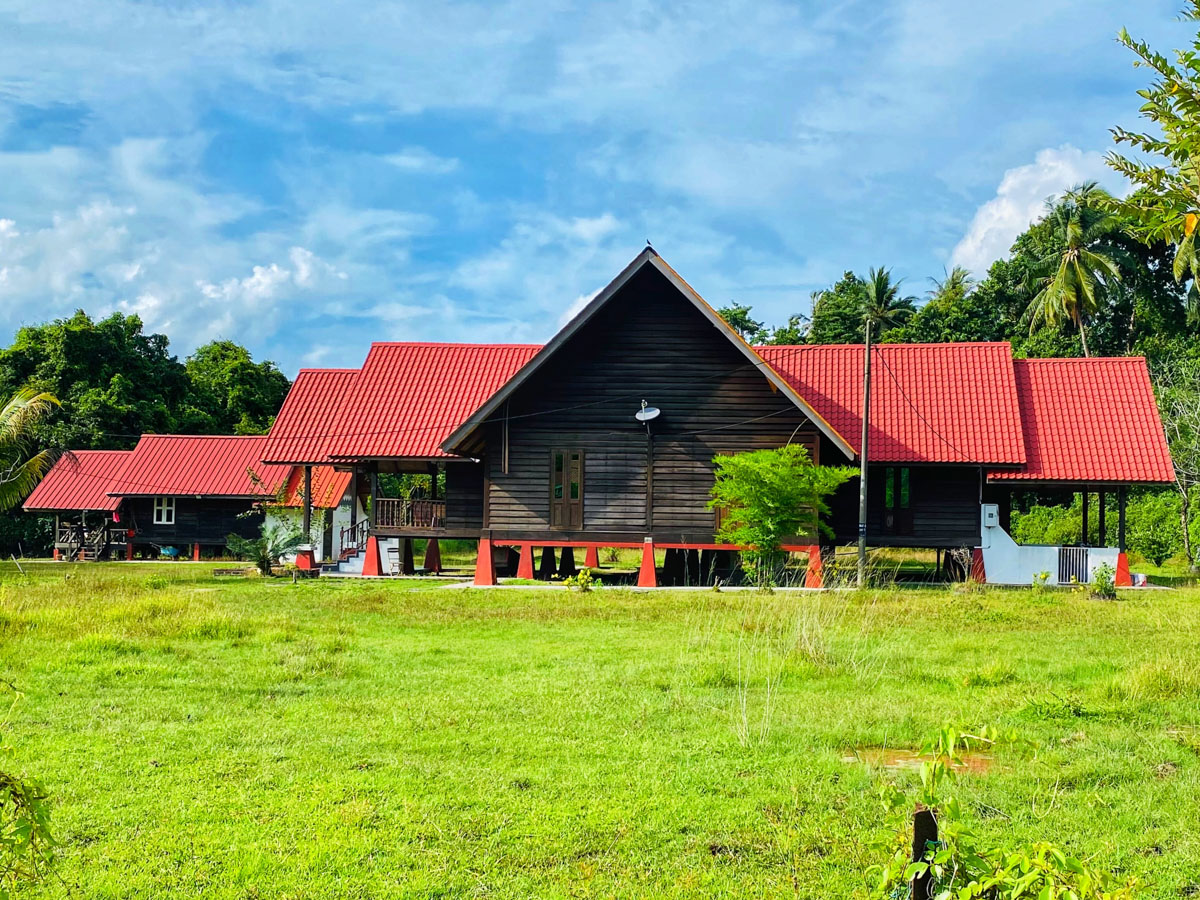
Driving north, we initially stopped at Bagan Pauh jetty, but found it clumsy for a relaxed meal. Following further advice, we opted for Tanjung Pandan instead, where we discovered Tanjung Pandan Corner, a simple yet perfectly situated restaurant.
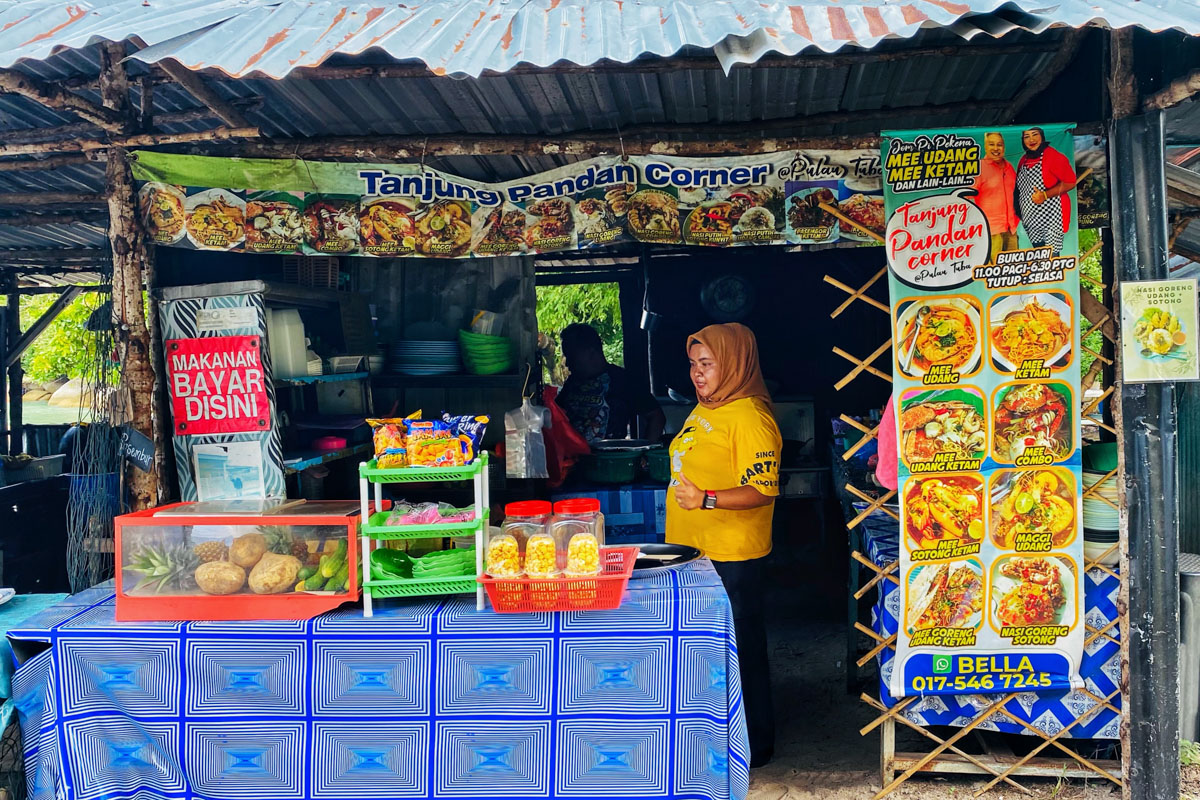
Dining just steps from the ocean, with pristine white sands stretching nearby, was a delight. The gentle ocean waves lapping the shore, accompanied by the aroma of local dishes wafting from the kitchen, heightened our senses. While part of us yearned to stroll along the secluded beach, our growling stomachs reminded us to first savor a delicious meal.
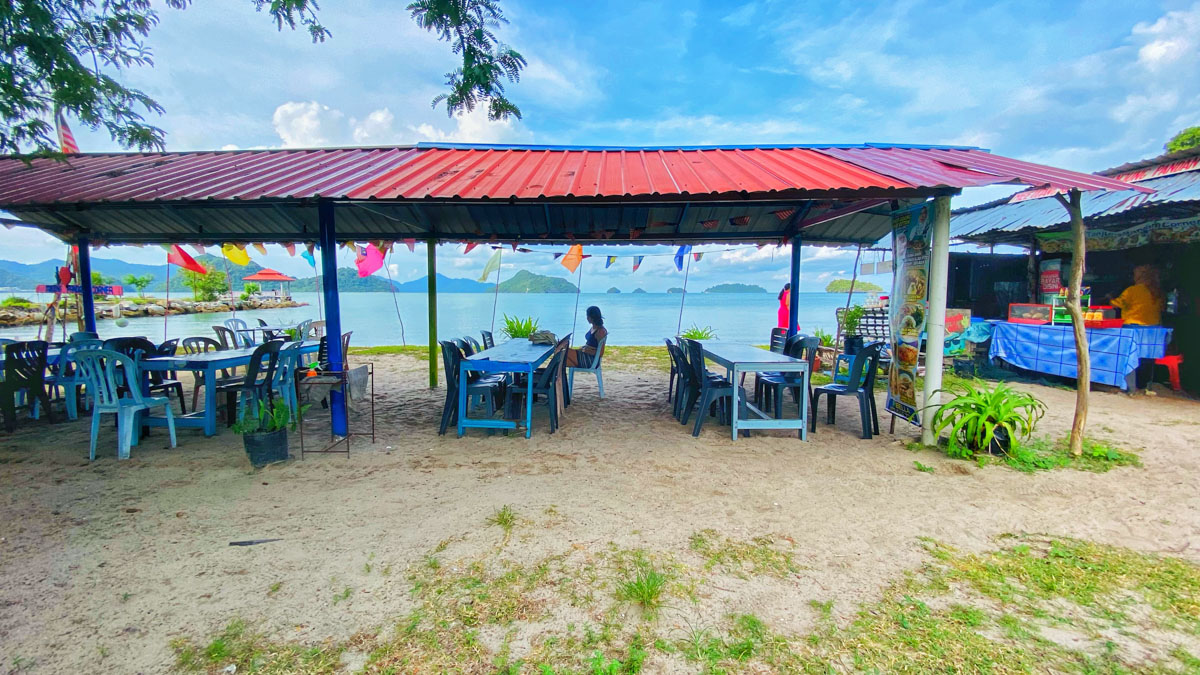
I had heard so much about Mee Udang that I was practically craving it. My family prefers vegetarian food, which is hard to find on this island. The kind lady suggested Mee Ketam for them, with noodles and eggs instead of seafood, and they were happy with that choice. She also recommended Milo, a unique Malaysian chocolate milk preparation that tastes delightful.
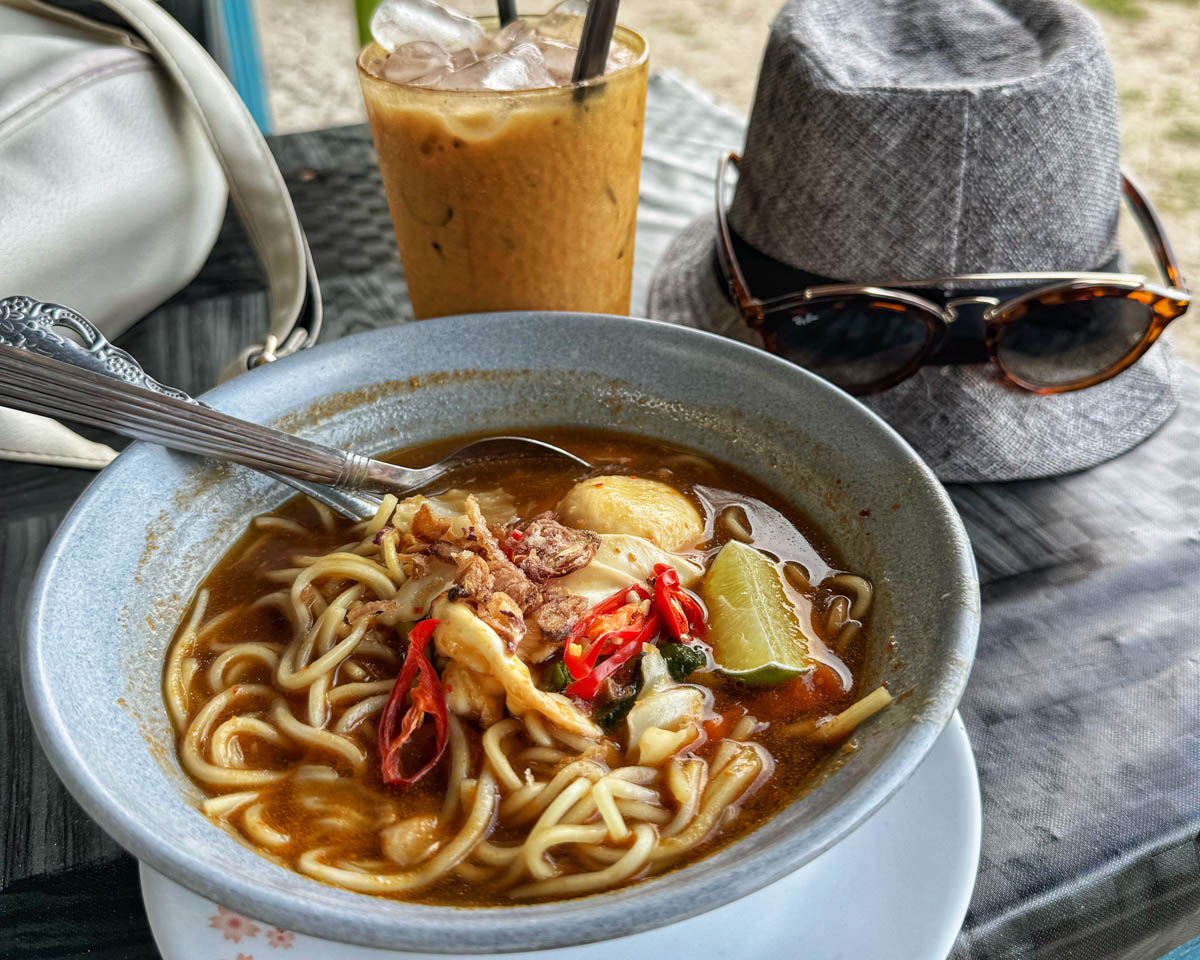
With our orders placed, my wife couldn’t resist a stroll along the beach, seeking solitude and soaking in the last moments of our island stay.
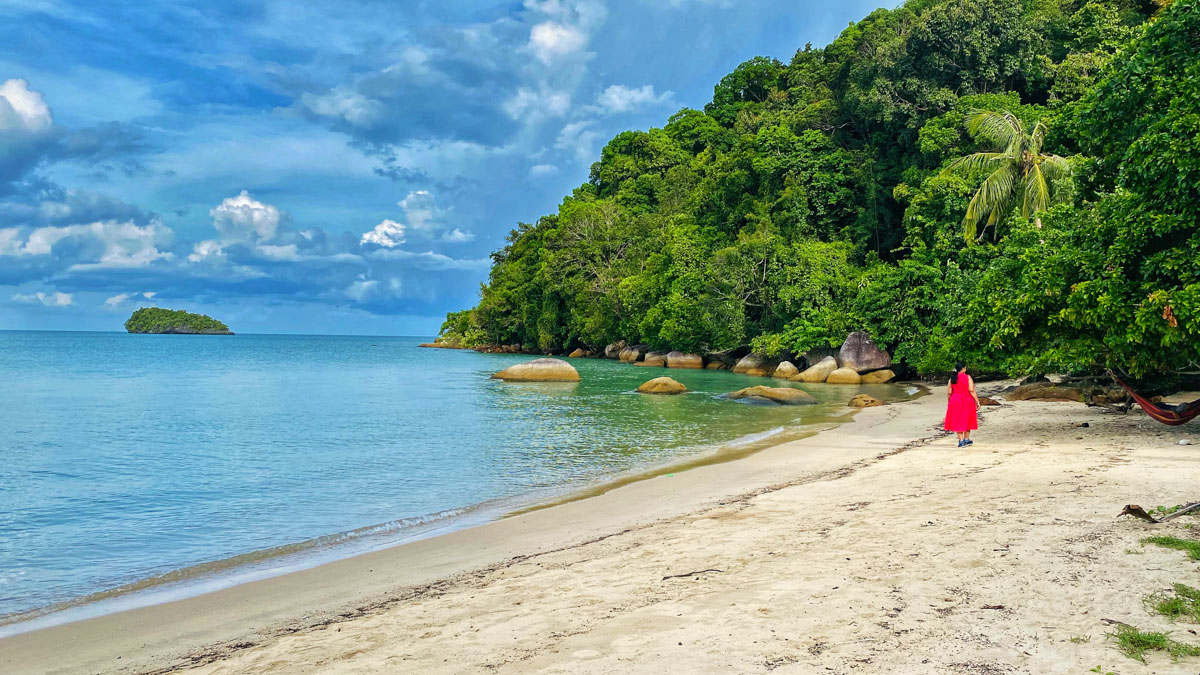
After a satisfying meal, we regained our energy. Eager to capture the island’s breathtaking views from Tanjung Pandan, we ensured not to miss a single photo opportunity. From there, we enjoyed panoramic vistas of Kuah’s coastline, with the towering Maha Tower standing prominently in the distance.
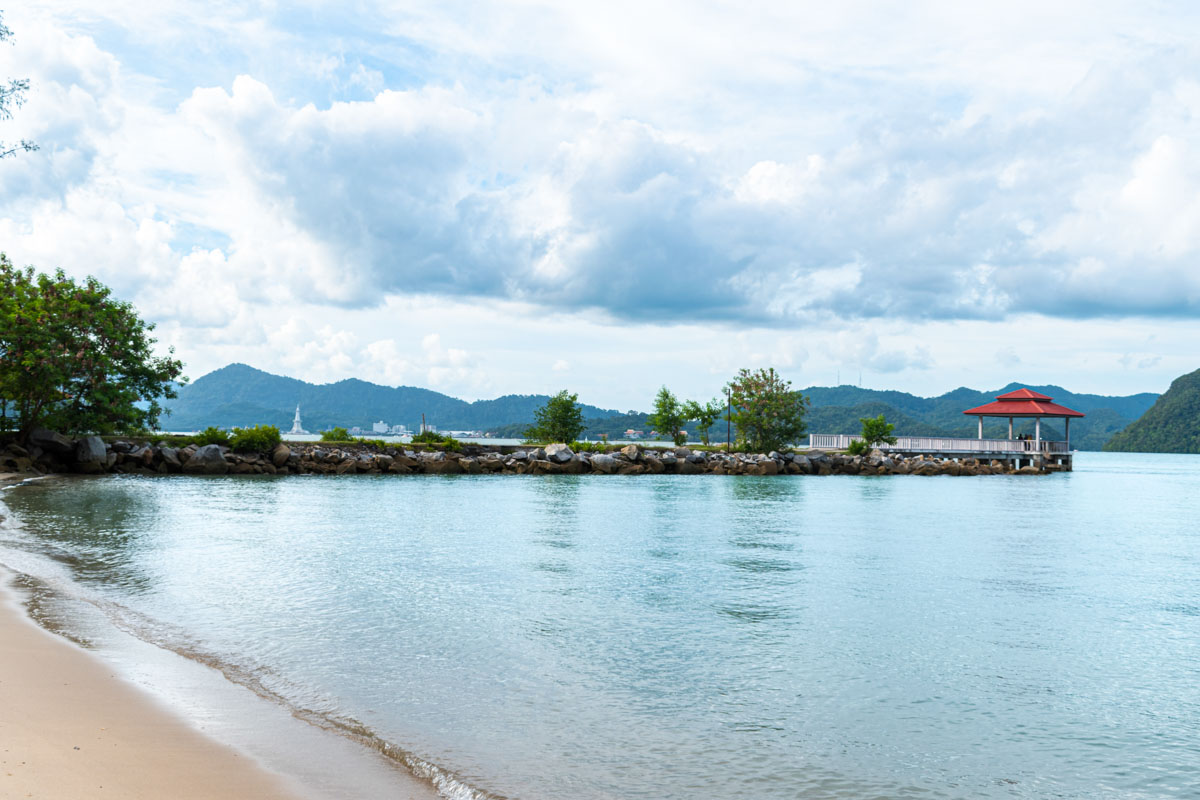
Photography
Pulau Tuba is a paradise for nature photographers. All you need is clear weather on the day you arrive. There are numerous photography spots scattered across the island, waiting to be discovered as you explore on your own. While seeking a spot for a family picture, we found an ideal setting beyond our expectations.
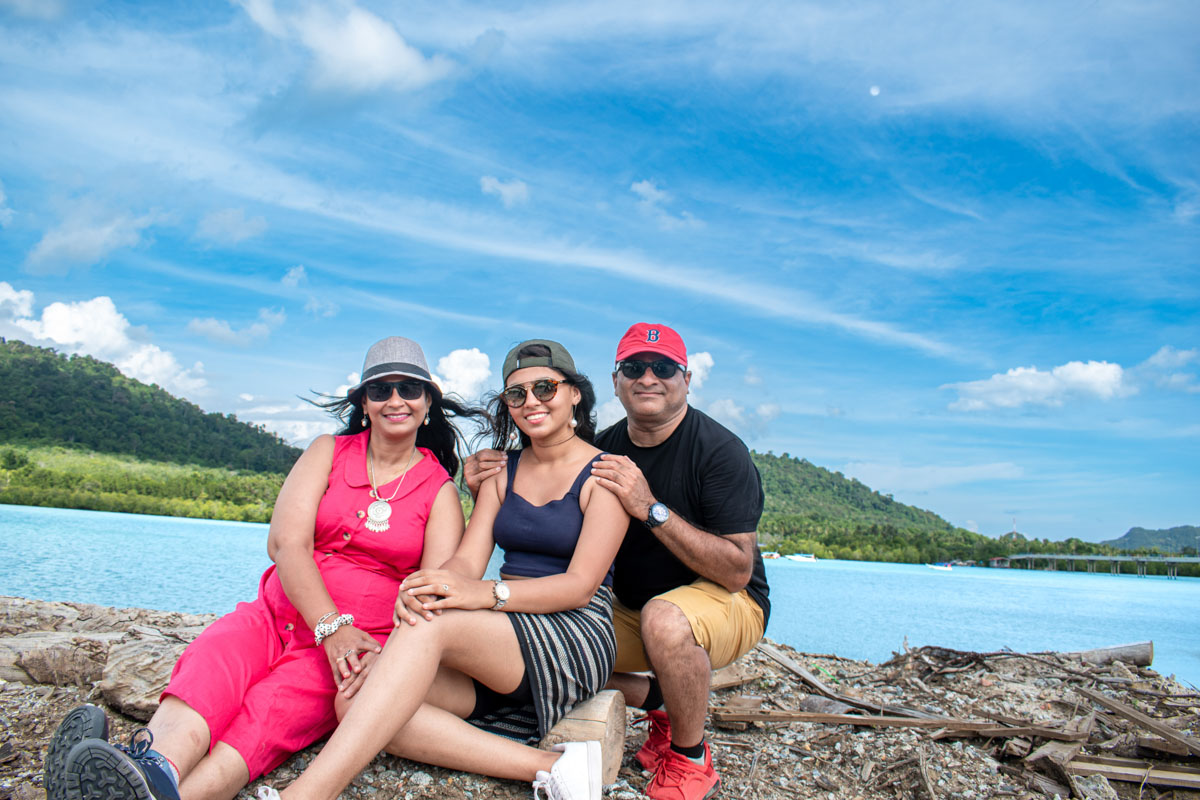
Wildlife Watching
Pulau Tuba is home to a significant population of water buffaloes, some wild and others domesticated by local farmers. Coming from India, where buffaloes are also common, I found these water buffaloes distinctive, with their expansive horns resembling bird wings. As a wildlife photographer, capturing them grazing in lush paddy fields against a backdrop of vibrant green foliage is a rewarding experience. There are two prime locations on the island where you can find these buffaloes in abundance, and I’m delighted to share those spots here.
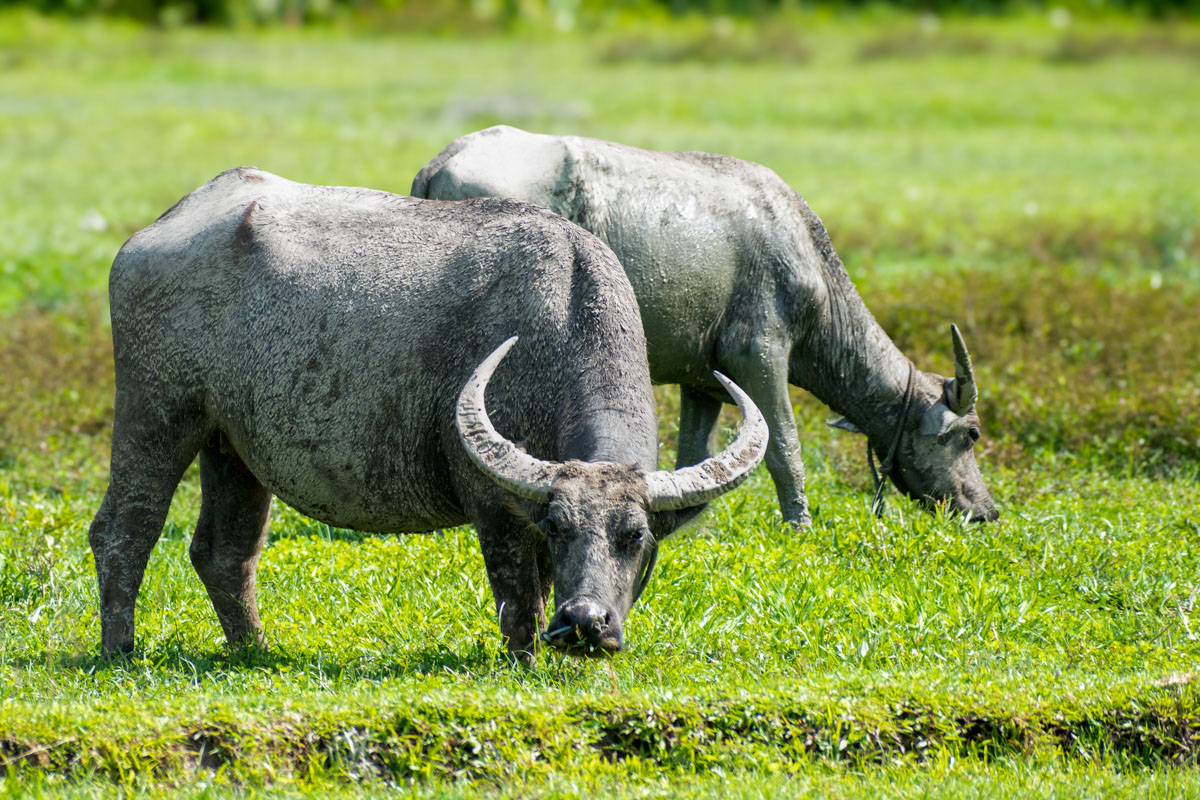
If you’re fortunate, you might catch a glimpse of Dusky Leaf Monkeys, also known as Spectacled Monkeys, though they tend to be elusive. I had a stroke of luck spotting them that day. Keep an eye out for lizards, particularly the monitor lizard, which are abundant on the island. Pulau Tuba is also known for its stingless bees found at Bukit Kecil, also known as Bukit Kecik.
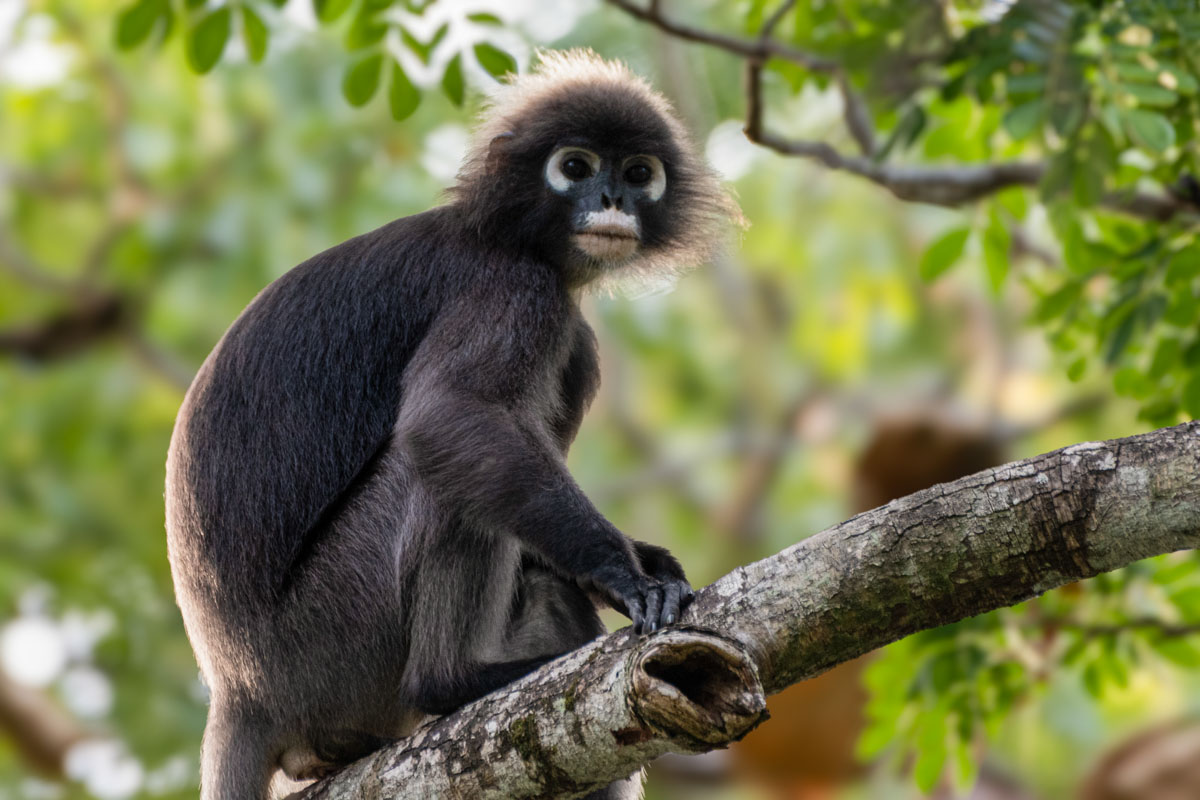
Birdwatching
Pulau Tuba may not boast an extensive array of bird species, but it offers a fascinating selection that bird enthusiasts will appreciate. Among the notable residents are the majestic great hornbills and oriental-pied hornbills that dominate the skies. Additionally, the island hosts a variety of other avian species such as the white-throated kingfisher, brahminy kites, and sea eagles.
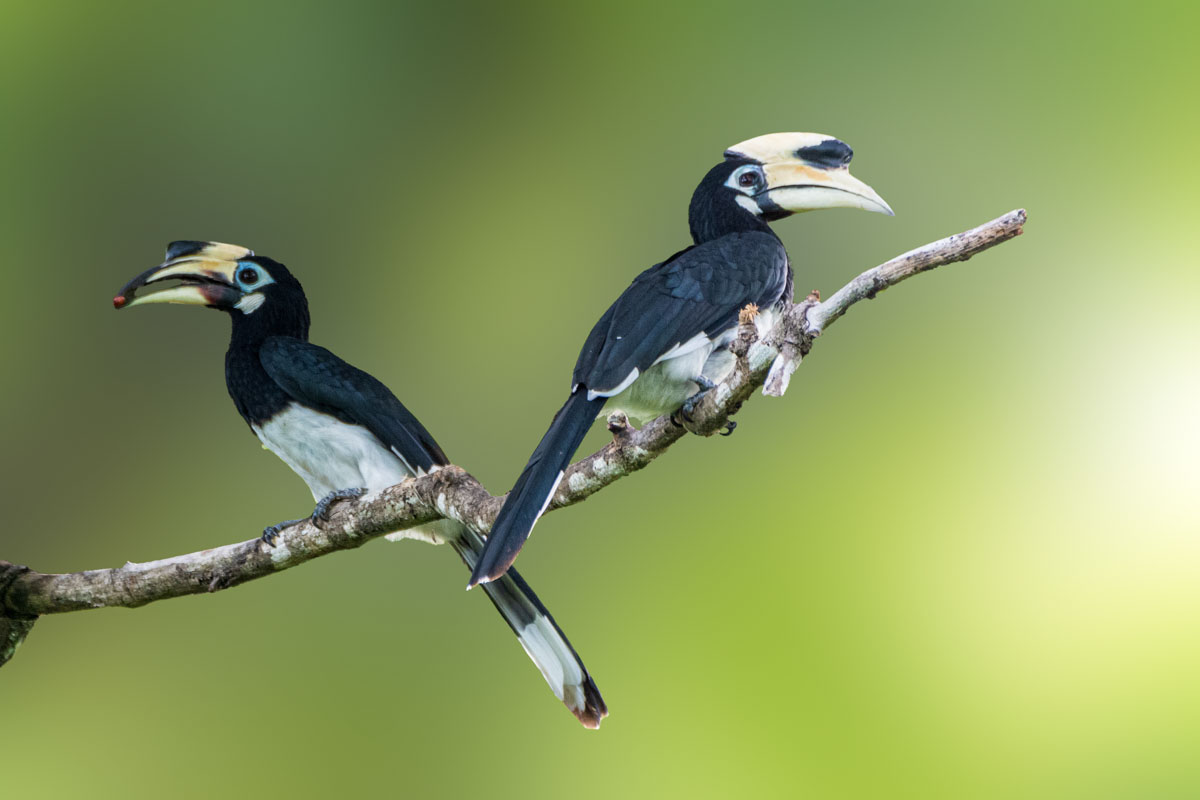
Another excellent birdwatching spot is at the main jetty. Here, you’ll find numerous waterbirds, including the Pacific Reef Heron. Unlike some birds, the Pacific Reef Heron is not shy around humans and can often be observed posing gracefully.
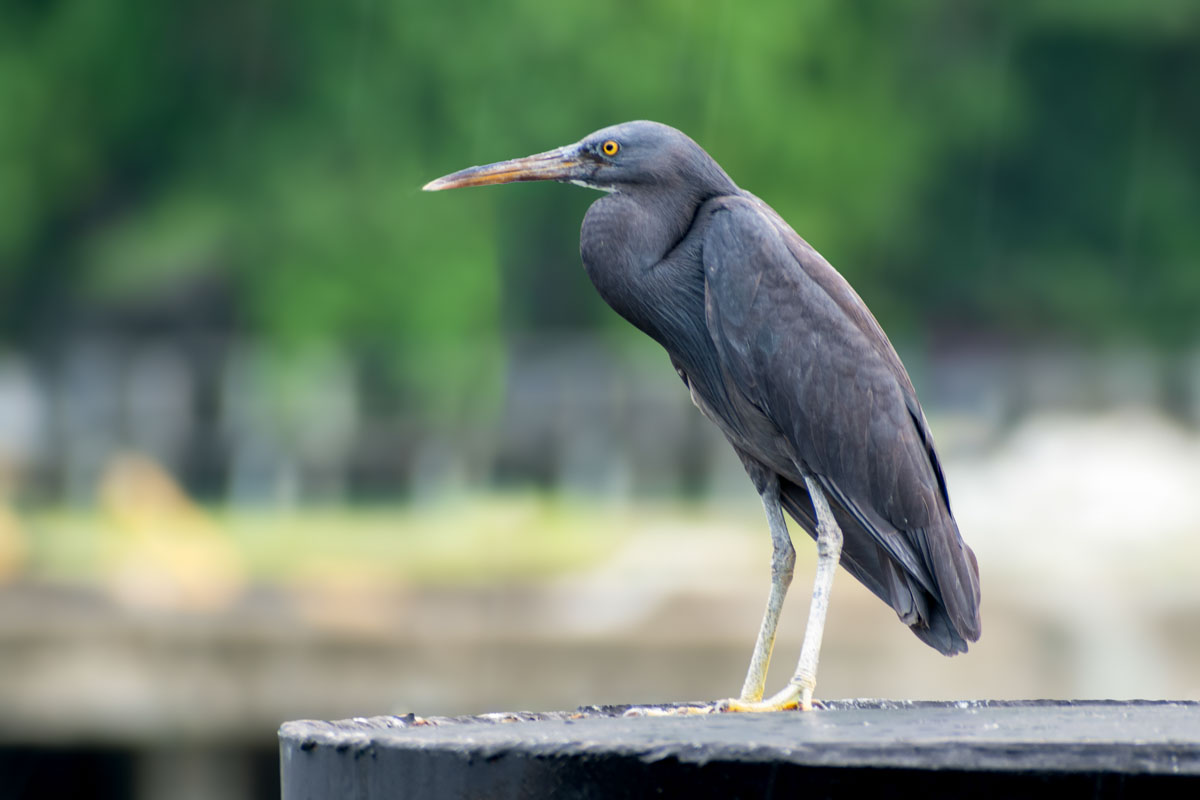
Trekking
Pulau Tuba offers a couple of appealing jungle trekking options. Among them is Gua Wang Buluh, a cave where residents sought refuge for over a month during the Japanese invasion in World War II. This trek is challenging and requires preparation. For those seeking an easier hike, Bukit Kecik provides a straightforward route with concrete steps leading to the summit in about 15 minutes. It’s advisable to hire a local guide for these treks to ensure safety and to enhance your experience.
Adventure
There are several adventure activities available on Pulau Tuba. You can hire a private boat for island hopping, which offers a different experience from the island hopping package tours in Pantai Cenang and Kuah. Additionally, kayaking and fishing excursions with local fishermen are popular options. During my visit, I even spotted a European tourist couple cycling around the island, though I’m unsure if cycle rentals are widely available. Some accommodations on Pulau Tuba do provide bicycles, so it’s worth checking with them.
What’s the average time to spend on Pulau Tuba?
You can explore Pulau Tuba on a day trip or opt for a longer stay, which I highly recommend. I regret not reserving more time for this picturesque island. We caught a ferry from Kuah at 3 pm and the last return ferry from Tuba at 7 pm, leaving us with just 4 hours on the island. An overnight stay on Pulau Tuba is the best way to experience the island. Alternatively, consider taking the early morning boat from Kuah at 9 am and returning by 5 pm or 7 pm. It’s essential to double-check the boat schedule timings to plan your visit effectively.
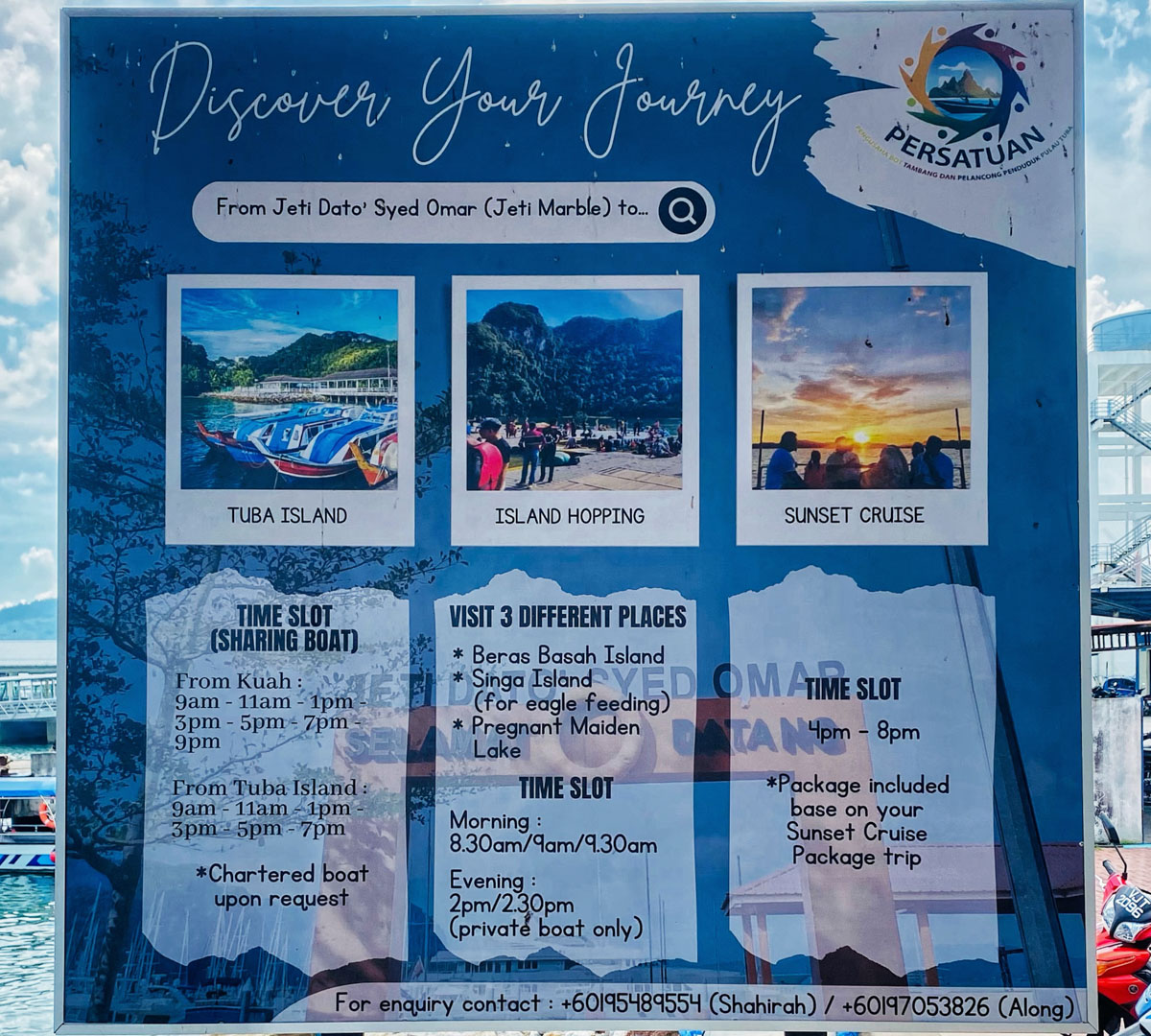
Getting there
Pulau Tuba is conveniently located just 5 km from Kuah town, with boats departing every two hours to various jetties. We boarded the boat from Dato Syed Omar jetty (previously known as Marble Jetty) in Kuah, positioned between the Kuah Ferry Building and the Royal Langkawi Yacht Club.
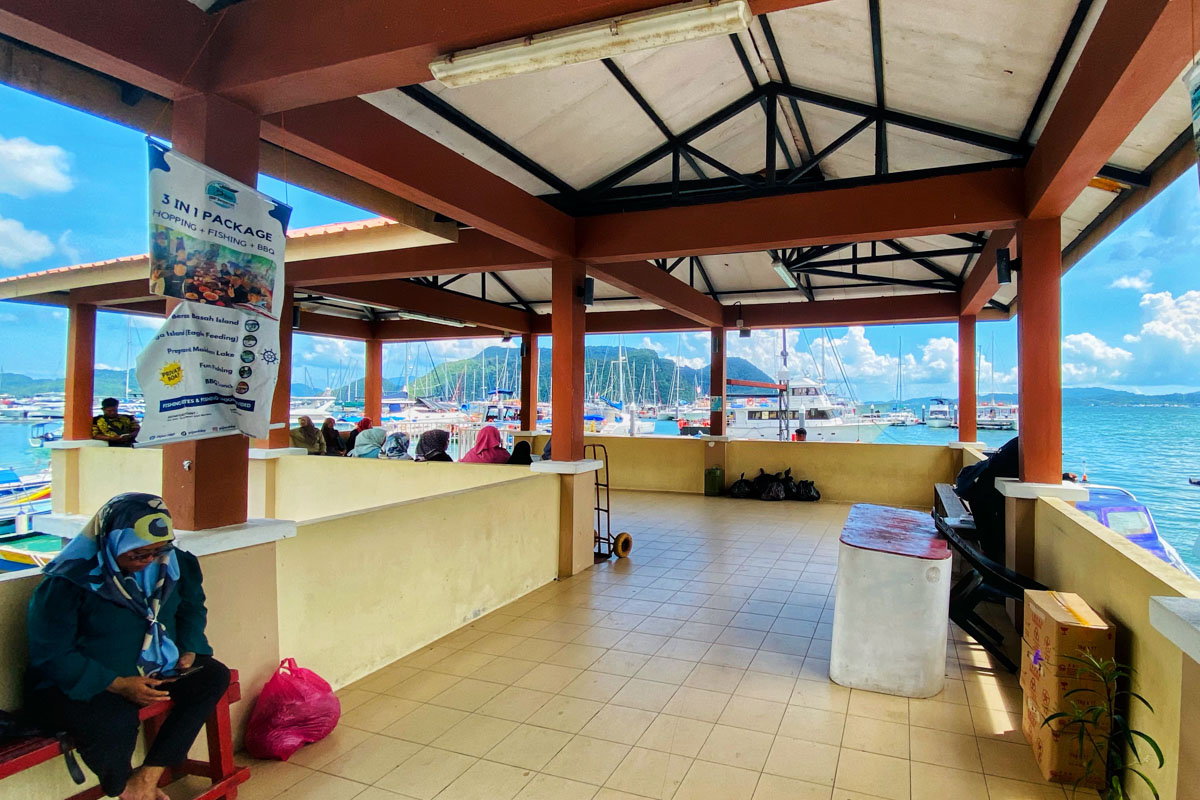
The boat ride takes only 15-20 minutes to reach the main Tuba jetty. Be prepared for a slightly bumpy ride, as these boats accommodate 10-15 people and can move quite swiftly. Sometimes, they operate with even smaller boats, so finding a spot may require some squeezing. We had a similar experience on our outbound journey, but the return trip was a bit smoother. The fare is RM 10 per person one-way; however, locals may pay half that amount.
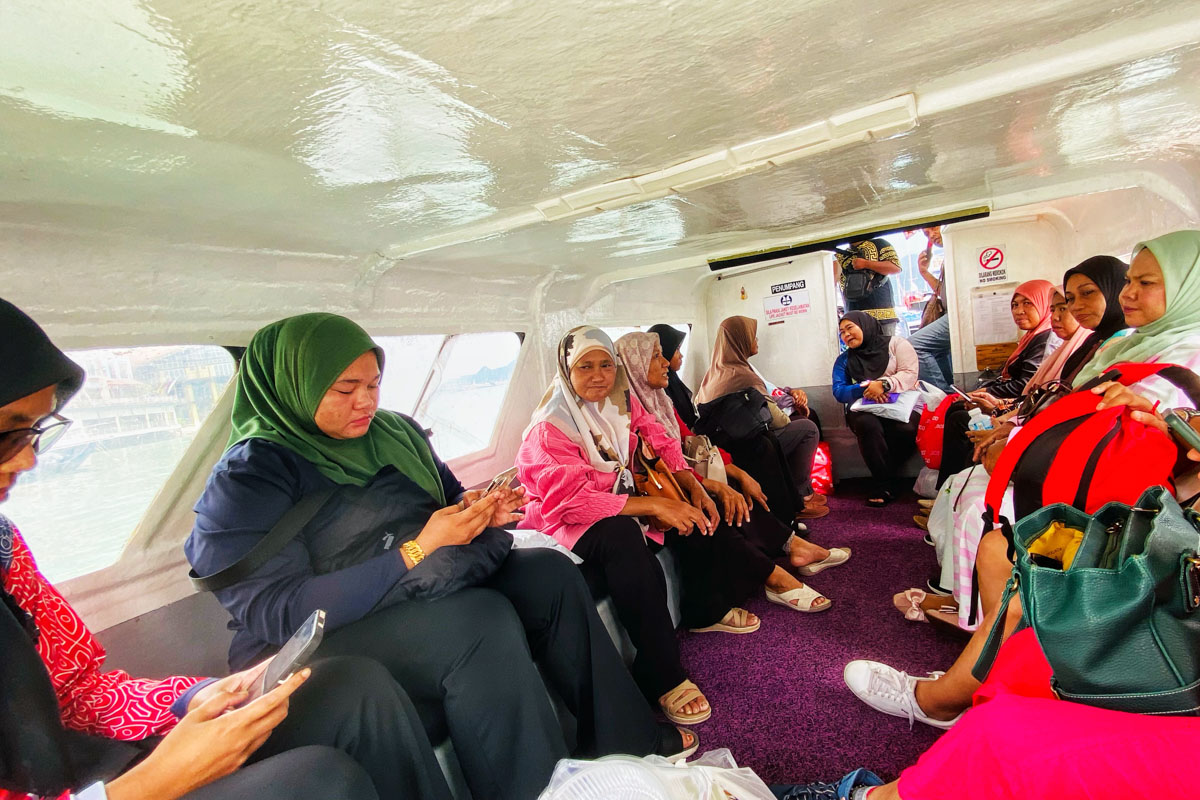
You can request to visit on the front deck, though it may be a tight fit. The view from the deck is exquisite, with the boat splashing through the water at speed. Just be cautious with your camera or mobile device due to the bumpy ride, as there’s a risk of losing it overboard.
You also have the option to charter a private boat, typically costing around RM 80 for a one-way trip. This is ideal for groups of 4-6 people, offering flexibility outside of scheduled boat timings. Comparatively, chartering from Pekan Rabu jetty comes at a higher cost. Boatmen at Dato Syed Omar jetty are mostly locals of Pulau Tuba, focused on providing lasting experiences rather than quick profits. A jet ski tour to Pulau Tuba is also available, which is a bit on the expensive side, but it offers a lot of adventure.
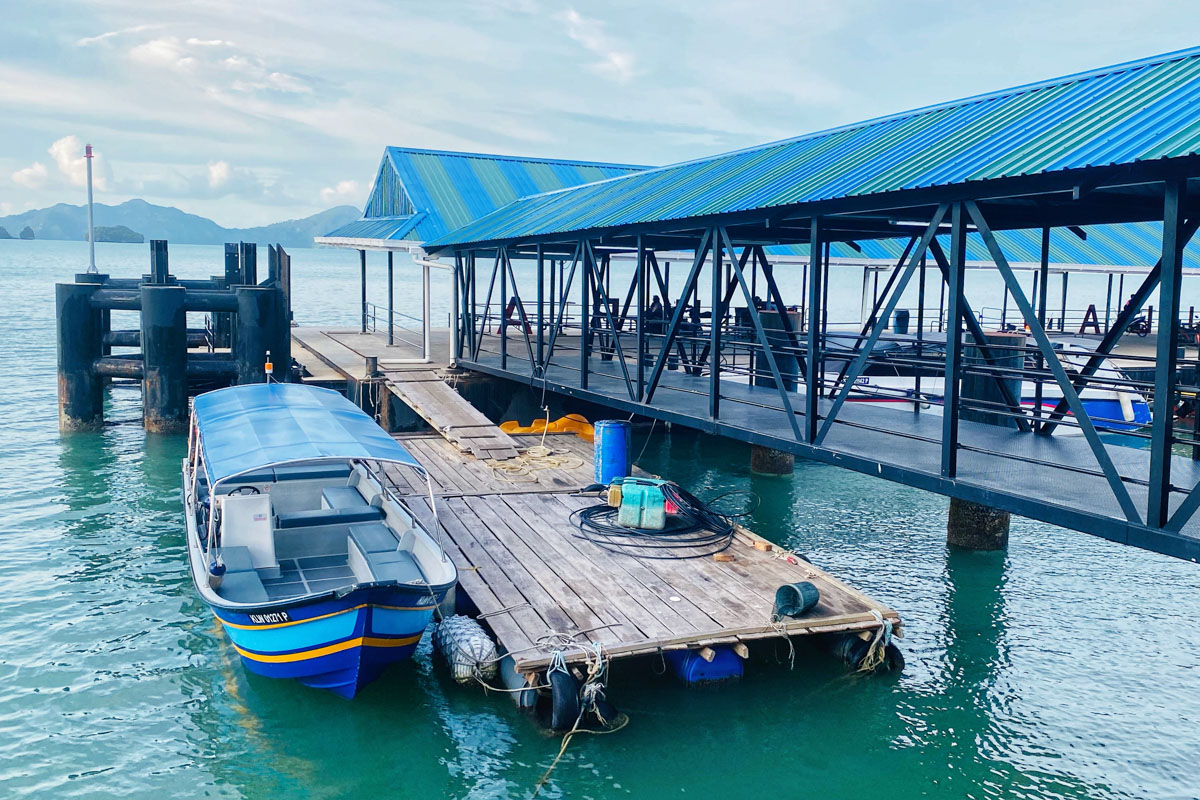
Upon arrival at Pulau Tuba jetty, don’t miss capturing the picturesque view of Kuah coastline, featuring the striking Maha Tower and the iconic Eagle at Dataran Lang. For the best shot, a mid-size telephoto lens is recommended to avoid blurriness often encountered when zooming with a mobile camera.
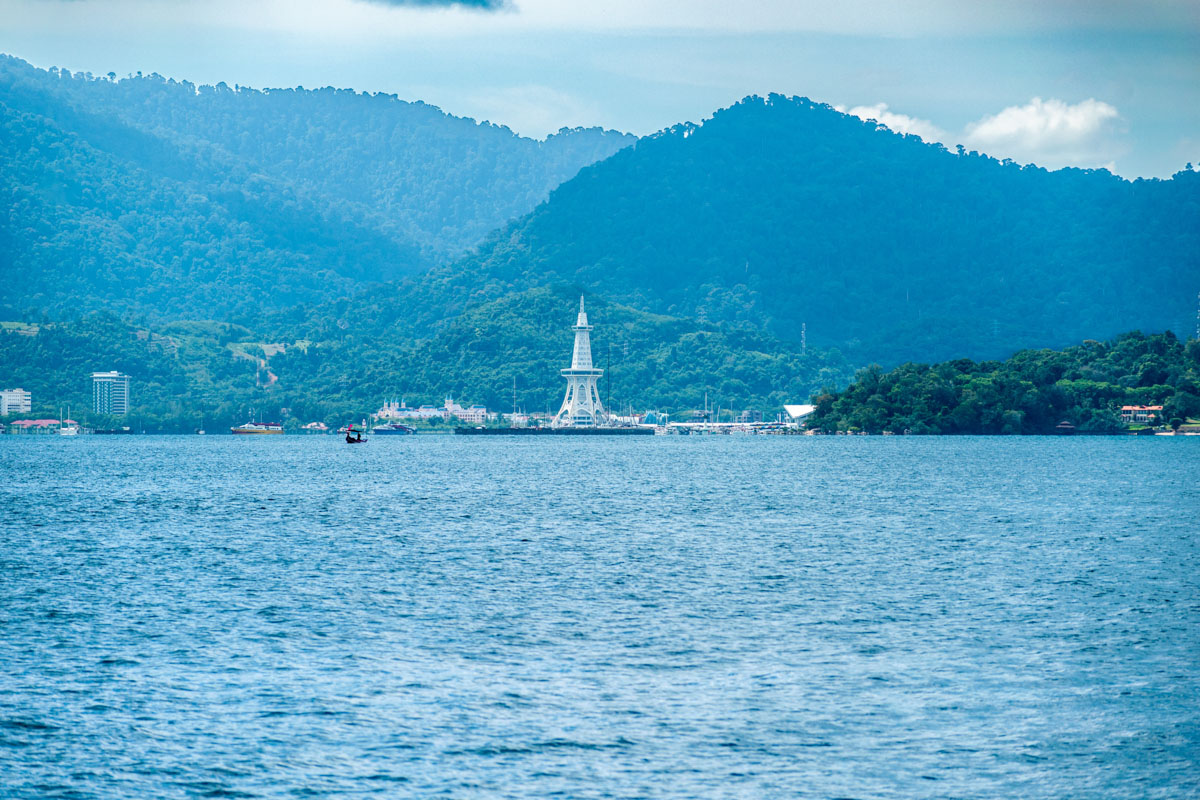
Scooter Rental on Pulau Tuba
Unlike Scooter rental in Langkawi, there are no specific rental shops or offices at Pulau Tuba jetty where you can rent a scooter. However, you’ll find around 40-50 scooters parked there and available for hire. I approached a shop owner who promptly called Jeffery for us. Jeffery arrived quickly and provided us with two scooters. Initially quoting RM 30 each, he kindly reduced it to RM 50 for both. Jeffery was very friendly and can be contacted at +60 19 455 3905 for his services. He instructed us to leave the scooters at the jetty with the keys inside upon our return. Upon our return, I called him to inspect the scooters. Fortunately, he was nearby but didn’t bother and instead inquired if we enjoyed his island. When renting a scooter, ensure it has sufficient petrol, as fuel stations are scarce and distant on the island.
Insider Tips For Tuba Island
- Most of the locals on Tuba speak basic English, and some even don’t, so learn a few useful Bahasa words or phrases. Locals are friendly and welcoming.
- You need to be careful when driving on these narrow roads, which are often littered with cattle droppings. A few main roads circle the island, so it would be very difficult to get lost.
- Avoid leaving any belongings unattended on your scooter, as monkeys may take them or cause damage.
- Do not venture into remote or uncharted areas without a local guide, as it can be risky and help may be hard to come by if stranded.
- Dishes containing prawns are cooked with the whole, uncleaned prawns. You’ll need to cut off the head and tail and peel the shell and legs before eating. The reason they cook like this is that they believe the prawns taste much better and I somewhat agree to it. Please ensure you are comfortable with cleaning the prawns by yourself before ordering the dish.
- Mobile network is largely available in major parts of the island barring a few pockets.
- Tuba may not appeal to those seeking a wild beach party scene.
- Due to the predominantly Muslim population, alcohol is not publicly offered or readily available.
- Please be respectful to the local culture and customs. I have seen a few foreign tourists driving motorbikes on the main roads of Langkawi shirtless. Please don’t do such things here on the island.
- Practice sustainable tourism by refraining from littering and avoiding actions that harm nature and wildlife.
- Note that there is no wifi or public washrooms available on the island.
- As the only remaining tuba tree lies on a private property, be respectful when visiting it.
Disclaimer:
This blog may contain affiliate links. At no extra cost to you, we may get a small commission if you buy anything. All products and services we endorse have been personally used or come highly recommended to us. These incomes allow us to keep the community supported and ad-free.

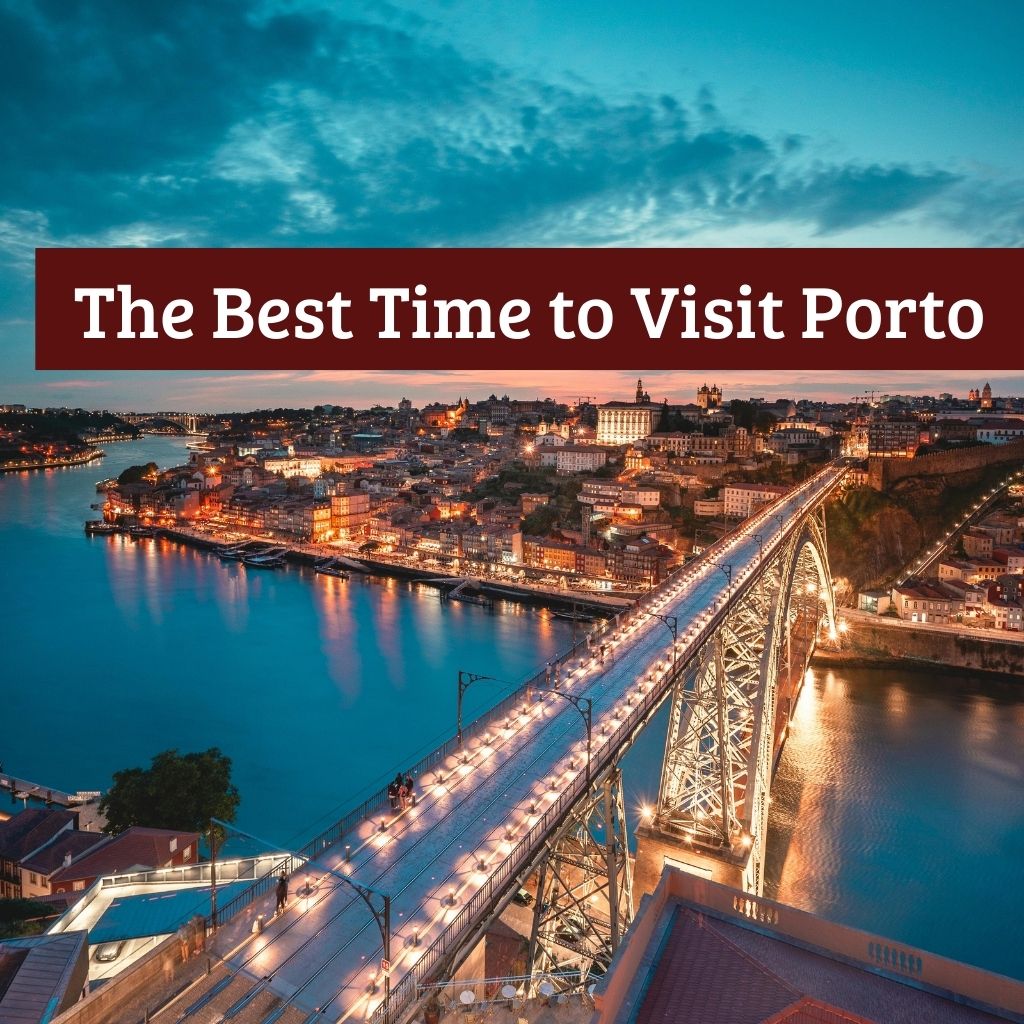
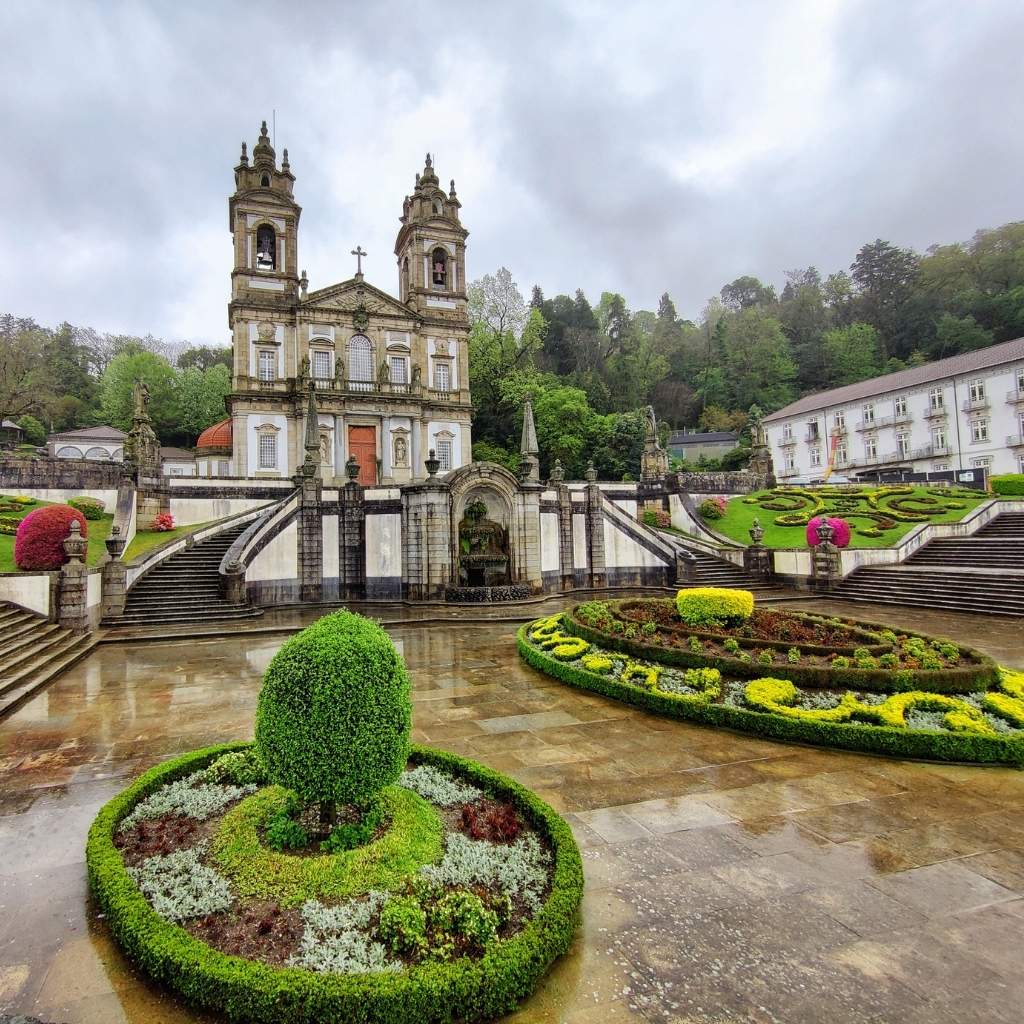
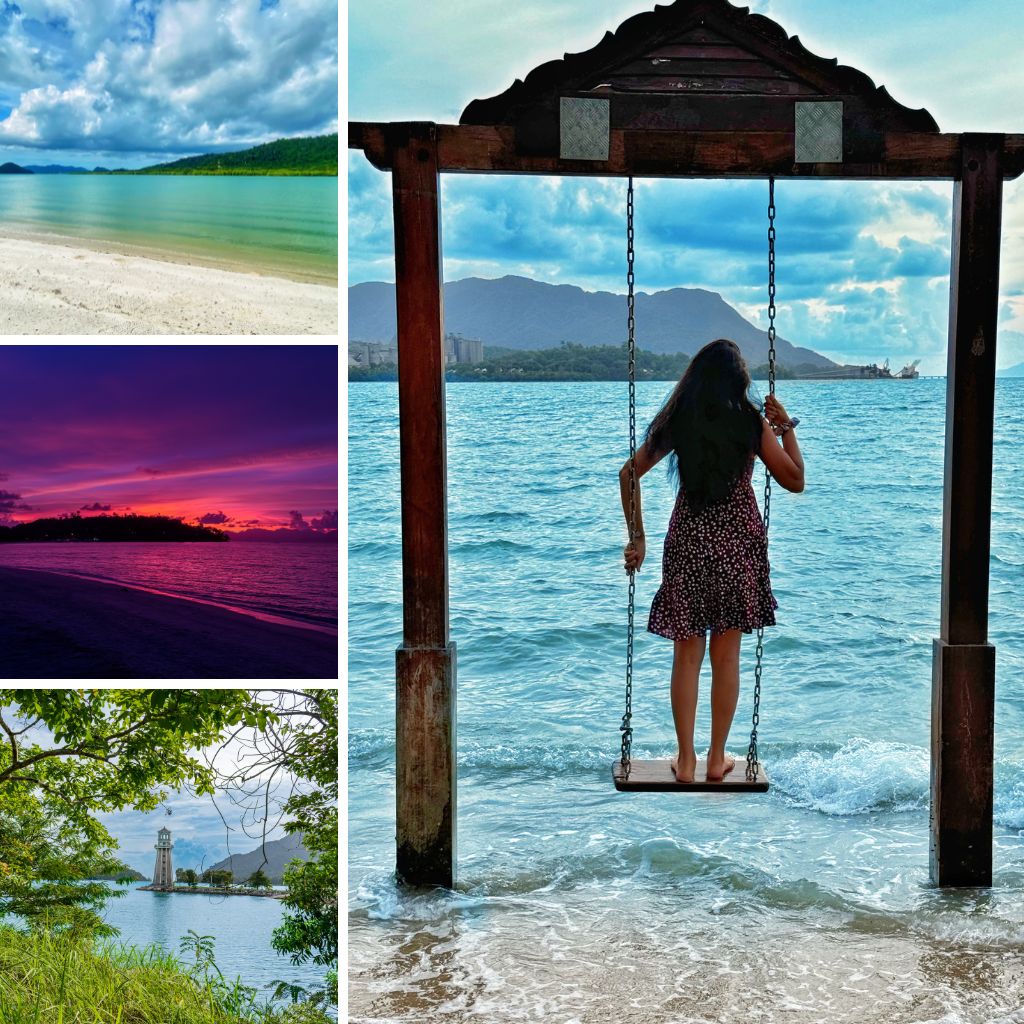
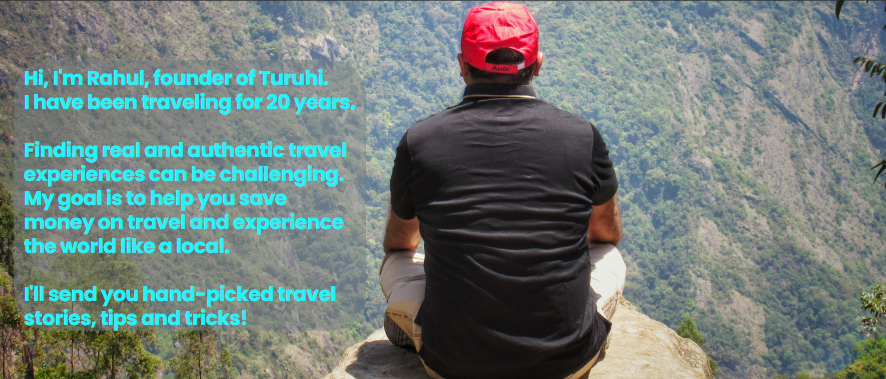
I am impressed with this story. You have taken details and i loved reading this story. thanks for sharing such a wonderful story and I am sure, this story will be helpful to all tourists.
Thanks Anand